
VOL. 47, ISSUE 1 • MARCH 2023 US $4.99/CAN $6.99 QUARTERLY Cultural Survival Indigenous
Demand Urgent Action
Leaders
WE ARE THE VOICE OF NATURE
MARCH 2023
VOLUME 47, ISSUE 1
BOARD OF DIRECTORS
PRESIDENT Kaimana Barcarse (Kanaka Hawai’i)
VICE PRESIDENT
John King
TREASURER
Steven Heim
CLER K
Nicole Friederichs
Valine Brown (Haida)
Kate R. Finn (Osage)
Laura Graham
Stephen Marks
Mrinalini Rai (Rai)
Tui Shortland (Māori)
Jannie Staffansson (Saami)
Stella Tamang (Tamang)
FOUNDERS
David & Pia Maybury-Lewis
Cultural Survival Headquarters 2067 Massachusetts Ave.
Cambridge, MA 02140 t 617.441.5400 f 617.441.5417 www.cs.org
Cultural Survival Quarterly
Managing Editor: Agnes Portalewska
Contributing Arts Editor: Phoebe Farris (Powhatan-Pamunkey)
Copy Editor: Jenn Goodman
Designer: NonprofitDesign.com
Copyright 2023 by Cultural Survival, Inc.
Cultural Survival Quarterly (ISSN 0740-3291) is published quarterly by Cultural Survival, Inc. at PO Box 381569, Cambridge, MA 02238. Periodical postage paid at Boston, MA 02205 and additional mailing offices. Postmaster: Send address changes to Cultural Survival, PO Box 381569, Cambridge, MA 02238. Printed on recycled paper in the U.S.A. Please note that the views in this magazine are those of the authors and do not necessarily represent the views of Cultural Survival.
Writers’ Guidelines
View writers’ guidelines at our website (www.cs.org) or send a self-addressed, stamped envelope to: Cultural Survival, Writer’s Guidelines, PO Box 381569, Cambridge, MA 02238.
at COP27

Bryan Bixcul (Maya Tz’utujil)
The UN Framework Convention on Climate Change in Sharm El Sheikh, Egypt, concluded with largely unfavorable outcomes for Indigenous Peoples.
14 Indigenous Voices from the Frontlines of Climate Change
• Lisa Qiluqqi Koperqualuk (Inuit)
• Lars Anders Baer (Saami)
• Great Grandmother Mary Lyons (Anishinaabe)
• Aeshatou Manu (Mbororo)
• Yolene Patricia Koteureu (Kanak)
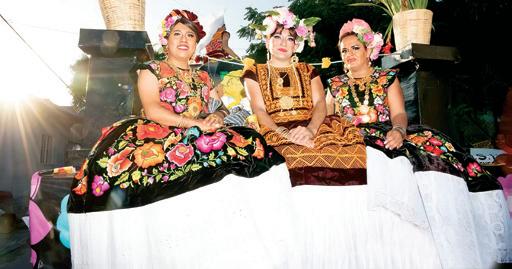
• Grace Balawang (Kankaney Igorot)
• Mrinalini Rai (Rai)
• Sara Elvira Kuhmunen (Saami)
• Jennifer Lasimbang (Kadazan)
• Tunga Rai (Rai)
18 Convention on Biological Diversity
COP15’s Wins and Losses for Indigenous Peoples Galina Angarova (Buryat) and Bryan Bixcul (Maya Tz’utujil)
The COP15 presidency adopted the Kunming-Montreal Global Biodiversity Framework at the 15th Conference of the Parties to the UN Convention on Biological Diversity.
21 Indigenous Leaders Speak on Protecting Biodiversity

• Giovanni Reyes (Kankanaey Igorot)
• Chrissy Grant (Kuku Yalanji and Torres Strait Islander)
• Vyacheslav Shadrin (Yukagir)
• Thomas Joseph (Hupa/Karuk/Paiute)
• Aslak Holmberg (Saami)
24 Indigenous Peoples Raise Concerns about Synthetic Biology
Dr. María Yolanda Teran (Kichwa)
The consequences and impacts of new biotechnologies are unknown.
DEPARTMENTS
Executive Director’s Message
2 In the News
4 Indigenous Languages
Np ' oq ’ ínišcn Language Warriors Carry the Flame for a New Generation of Speakers
6 Rights in Action
Universal Periodic Review of Guatemala
8 Climate Change
Guåhan Means “We Have”
10 2SLGBTQ+ Voices
Verbena Muxe: Resisting Gender Binaries Through Indigeneity
26 Keepers of the Earth Fund
Grant Partner Spotlight
Reestablishing Diné Food Sovereignty Through Farming Traditions
28 Staff Spotlight
Mariana Kiimi Ortiz Flores (Na Ñuu Savi)
29 Bazaar Artist
Nature-Made Art by Tahiana Creation (Malagasy)
ii | www.cs.org
Cover photo by Jamie Malcolm-Brown
Page 4
Page 10 Page 12 Page 14
We Are the Voice of Nature

Dear Cultural Survival community,
Today the world is facing multiple crises. Human activity is changing the world’s climate in extraordinary and sometimes irreversible ways, causing biodiversity loss that is unprecedented in human history. We hear Elders in our communities talk about how our ecosystems were so different just a few generations ago. The world they describe seems so far from the world we know today. This issue of the CSQ is dedicated to uplifting the voices of Indigenous leaders who have been working diligently to defend the rights of nature and the rights of Indigenous Peoples, demanding urgent action for biodiversity protection and climate change mitigation and adaptation— sometimes at great risk to their own lives.
Biodiversity loss and climate change emergencies are closely interlinked; in fact, climate change is now one of the main causes of biodiversity loss. Scientists have identified that the burning of fossil fuels, unsustainable diets, urbanization, changes in land use, and overexploitation of species are to blame for these crises. Yet, governments around the world continue to fail to take action at devising and implementing real policy reforms that would help the planet survive. Instead, they continue to assure us that markets will solve the very problems they have created.
Indigenous Peoples continue to hold sustainable relationships with our Mother Earth and have so much to offer to solve these crises. The brilliance of Indigenous solutions comes from the direct relationships we have held with nature for millennia. Yet, Indigenous Peoples continue to be denied a seat at the table. As Elder Vyacheslav Shadrin (Yukagir) said last December in Montreal, “the voices of Indigenous Peoples are the voice of nature.” If we are to solve these crises, we must listen to the voice of Indigenous Peoples.
The world needs to move away from anthropocentric solutions. Government leaders are focused on the viability of the human species. But what about the fourlegged, the winged, and those who roam the oceans? Who will advocate for them? Who is willing to stand in the way of total destruction of their ecosystems, their homes?
In spite of all the challenges, Indigenous Peoples of the world continue to use their Traditional Knowledge to heal the land and to make innovations for biodiversity protection and climate change mitigation. Indigenous Peoples understand that we must protect our Mother Earth. Everything from our food, medicines, and clothing to our cultures and languages, our stories, and even our joy, depends on this relationship, and we will do everything in our power to protect her.
Global conventions and agreements will not solve the challenges the world faces on its own. However, they do provide a platform to shift the consciousness of mainstream society and are an opportunity to show policymakers how Indigenousled solutions are working on the ground. Cultural Survival’s delegation to COP27 in Sharm El Sheikh, Egypt, and to CBD COP15 in Montreal, Canada, witnessed the diligent work of Indigenous leaders at these global platforms. We express our gratitude to them and to the global Indigenous movement. We are committed to this fight, however long it takes.
Our work relies on your financial support. Please renew your commitment to supporting Indigenous Peoples’ rights so we can ensure they are fully respected, protected, and fulfilled. Thank you for your solidarity and support.
With gratitude,
 Galina Angarova (Buryat) Executive Director
Galina Angarova (Buryat) Executive Director
CULTURAL SURVIVAL STAFF

Galina Angarova (Buryat), Executive Director

Mark Camp, Deputy Executive Director
Avexnim Cojtí (Maya K’iche’), Director of Programs
Verónica Aguilar (Mixtec), Program Assistant, Keepers of the Earth Fund
Michael J. Beeler, Individual Donor Manager
Bryan Bixcul (Maya Tz’utujil), Executive Coordinator
Cliver Ccahuanihancco Arque (Quechua), Keepers of the Earth Program Assistant

Miguel Cuc Bixcul (Maya Kaqchikel), Accounting Associate
Jess Cherofsky, Interim Advocacy Program Manager
Michelle de León, Executive Assistant
Roberto De La Cruz Martínez (Binnizá), Information Technology Associate
Danielle DeLuca, Senior Development Manager
Shaldon Ferris (Khoisan), Indigenous Radio Program Coordinator
Sofia Flynn, Accounting & Office Manager
Nati Garcia (Maya Mam), Capacity Building Manager
Adriana Hernández (Maya K'iche'), Emerging Strategies Coordinator
Natalia Jones, Advocacy Associate
Mariana Kiimi (Na Ñuu Sàvi/Mixtec), Advocacy Assistant
Dev Kumar Sunuwar (Koĩts-Sunuwar), Community Media Program Coordinator
Rosy Sul González (Kaqchikel), Indigenous Rights Radio Program Manager
Bia’ni Madsa’ Juárez López, (Mixe/Ayuuk ja’ay & Zapotec/Binnizá), Keepers of the Earth Fund Program Manager


Marco Lara, Social and Digital Media Coordinator
Kevin Alexander Larrea, Information Technology Associate
Carlos Madrigal (Mazahua/Jñatjo), Capacity Building Program Assistant
Jamie Malcolm-Brown, Communications & Information Technology Manager
Amparo Monzón (Maya K’iche’), Program Assistant, Community Media & Indigenous Rights Radio Programs
Cesar Gomez Moscut (Pocomam), Community Media Program Coordinator
Edson Krenak Naknanuk (Krenak), Lead on Brazil
Diana Pastor (Maya K’iche’), Media Coordinator
Guadalupe Pastrana (Nahua), Indigenous Rights Radio Producer
Agnes Portalewska, Senior Communications Manager
Sócrates Vásquez (Ayuujk), Program Manager, Community Media
Miranda Vitello, Development Coordinator
Candy Williams, Human Resources Manager
Raquel Xiloj (Maya K’iche’), Community Media Grants Coordinator
Pablo Xol (Maya Qʼeqchiʼ), Design and Marketing Associate
INTERNS
Katrina Arriola, Camilla Lindschouw, Yolis López Martínez, Charlie Malcolm-McKay, Alma Xochitl Zamora
Cultural Survival Quarterly March 2023 | 1
EXECUTIVE DIRECTOR’S MESSAGE
Tanzania | Murder Charges Dismissed Against 24 Maasai Land Defenders
(NOVEMBER)
Murder charges have been dropped against 24 Maasai accused of killing a police officer during an eviction campaign. The Tanzanian government continues to push for the creation of a protected wildlife reserve in Loliondo, the ancestral home of the Maasai peoples, which could result in the forced removal of up to 150,000 Maasai people in Loliondo and Ngorongoro areas.
U.S. | Native American Candidates Gain Ground
(NOVEMBER)
On November 8, more than 85 Indigenous candidates were elected to political offices in 22 states, increasing the presence of Indigenous people in federal, state, and local governments.

Indonesia | Ancestral Forests of Indigenous Papuans Recognized
(DECEMBER)
The government of Indonesia has transferred control of state forests to seven Indigenous groups in Papua’s eastern area. The region has been threatened by an increase in logging, mining, and plantation development. No permits for any type of commercial activity will be granted in the Indigenous territory.
U.S. | New Law Prohibits Export of Sacred Native Items
(DECEMBER)
On December 21, the Safeguard Tribal Objects of Patrimony Act was signed into law by President Biden, imposing harsher penalties, forbidding the export of sacred Native American artifacts from the U.S., and establishing a certification procedure to separate sacred from artistic objects.
Canada | Sukunka Coal Mine Rejected in British Columbia
(DECEMBER)
A Sukunka, B.C. coal mine project will not receive an environmental assessment
certificate due to its substantial negative environmental and social implications. Located in the heart of Treaty 8 First Nations territory, the Sukunka project could have pushed the endangered caribou herd to extinction.
U.S. | Congress Approves Native American Language Resource Center Act
(DECEMBER)
The Native American Language Resource Center Act was approved by Congress on December 22. The bipartisan legislation will strengthen Native American language programs and schools by supporting students at all stages of learning and providing additional resources for remote learning.
U.S. | $1.7 Trillion Spending Bill Aims to Support Native Communities
(DECEMBER)
On December 22, the Senate passed President Biden’s $1.7 trillion Omnibus spending bill. Included in that bill is advanced appropriations for the Indian Health Service, securing its funding through 2024. The bill also contains funding for Native American housing programs, water projects for Indigenous communities, and initiatives to address violence against Native American women.
Brazil | Sonia Guajajara Named First Minister of Ministry of Indigenous Affairs
(DECEMBER)
On December 28, Sonia Guajajara (Guajajara) made history when she was appointed by Brazil’s President, Lula da
Silva, as the first Minister of the newly created Ministry of Indigenous Affairs. Guajajara will manage FUNAI as well as all secretariats and agencies responsible for public policies for Indigenous Peoples.
U.S. | New Alert System Used to Find Missing Indigenous People in Colorado
(JANUARY)
The disappearance of Wanbli Vigil, a 27-year-old Lakota man, is the first case to activate Colorado’s new Missing Indigenous Person Alert system, which automatically notifies local and state law enforcement as well as media outlets. Colorado joins Washington State as the second state to develop such alert systems in recent months.
Canada | First National Ribbon Skirt Day Celebrated
(JANUARY)
Prime Minister of Canada, Justin Trudeau, proclaimed January 4 National Ribbon Skirt Day. Ribbon skirts are typically reserved for Indigenous ceremonies or special events, with the colorful ribbons symbolizing a special meaning to the wearer.
Brazil | President Lula Signs Pro-Indigenous and Pro-Environment Measures
(JANUARY)
President of Brazil, Lula da Silva, signed six decrees on his first day in office canceling or amending former President Jair Bolsonaro’s anti-environmental policies. The orders included resuming initiatives to fight deforestation and the cancellation of a decree that encouraged mining in Indigenous territories and protected areas.
U.S. | Pebble Mine Blocked in Alaska
(JANUARY)
After decades of Indigenous activism, the Environmental Protection Agency vetoed a proposed massive open-pit copper and gold mine in a remote region of southwest Alaska where headwaters streams sustain one of the world’s largest wild salmon fisheries.
2 | www.cs.org
IN THE NEWS
Sonia Guajajara (Guajajara) attending COP 27. Photo by Edson Krenak.
ADVOCACY UPDATES
Guatemala: Guatemala Pressed on Indigenous Peoples’ Rights to Freedom of Expression (OCTOBER)

Cultural Survival’s Advocacy Program launches international campaigns in support of grassroots Indigenous movements as they put pressure on governments and corporations to respect, protect, and fulfill the rights of their communities.
Cultural Survival and Asociación Sobrevivencia Cultural submitted an alternative report for the 72nd session of the UN Committee on Economic, Social and Cultural Rights evaluating the progress of the State of Guatemala related to its commitments to uphold the rights of Indigenous Peoples enshrined in the International Covenant on Economic, Social and Cultural Rights and providing recommendations to the State to improve its compliance with these rights. The Committee met in October to examine the informa tion that was submitted. Several of our recommendations were included in the Concluding Observations related to stopping the criminalization of community radio stations, adopting a community media legal framework that respects their right to participate in cultural life, and stopping the persecution of Indigenous land defenders.
India: Record on Indigenous Peoples’ Rights Reviewed (NOVEMBER)
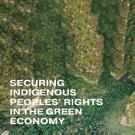
On November 10, UN member states reviewed India’s human rights record during the 41st Session of the Universal Periodic Review, a process carried out by the UN Human Rights Council. India was heavily criticized for failing to give specific attention to the defenders of the rights of minority Dalit (Scheduled Castes) and Adivasi (Indigenous Peoples or Scheduled Tribes) communities, as well as human rights activists, journalists, women’s rights defenders, and other defenders working to safeguard the rights of women and children. In a jointly filed stakeholder report, Cultural Survival and partner organizations, Jharkhand Indigenous and Tribal Peoples for Action and KAT News Channel, urged India also to repeal its amended citizenship act and put an end to the culture of killings in northeast India.
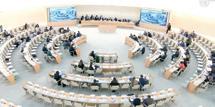
Belize: State Failing to Implement Court Orders to Respect Maya Land Right (NOVEMBER)
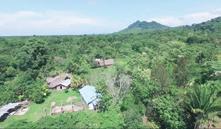
On November 29, the Caribbean Court of Justice heard arguments
Maya Leaders Alliance v The Attorney General of Belize regarding the lack of compliance of the State of Belize with the Court’s 2015 decision in favor of Maya land rights. The State continues to fail to properly engage in good faith with the alcaldes
(traditional authorities) to establish a basic roadmap for the implementation of the ruling. In February 2022, the Ministry of Indigenous Affairs embarked on a three-day consultation with some Maya villages and NGOs that support its agenda, though it refused to engage with the alcaldes. The State has also replaced the concept of consent with consultation, in violation of the established Indigenous right to Free, Prior and Informed Consent.
Guatemala: Maya Peoples Demand Return of Sacred Artifacts (DECEMBER)
On August 18, 2021, the Maya Throne I and Dintel III, pieces housed at the Piedras Negras archaeological center in Guatemala and considered masterpieces of Classic Mayan art, were illegally exported to the Metropolitan Museum of Art in New York City without the Maya Peoples’ consent under the guise of conservation and restoration efforts. The restoration work has consisted of removing thick layers of dust, filling gaps with plaster filaments, and conducting a contactless laser cleaning to restore its original pink color. In December, the community released a statement demanding the return of the sacred items.

U.S.: Coalition Stands with Apache Stronghold in Demanding FPIC (FEBRUARY)
The Securing Indigenous Peoples Rights in the Green Economy Coalition stands with the Apache Stronghold in demanding that Free, Prior and Informed Consent (FPIC) is honored. Oak Flat, or Chi’chil Bildagoteel in Apache, is a sacred area within the Tonto National Forest in eastern Arizona that has been a place for ceremony and gathering medicines since time immemorial. The Apache Stronghold, a group of traditional Apache and other Native and non-Native allies, oppose BHP and Rio Tinto’s Resolution Copper project, a proposed underground mine 60 miles east of Phoenix that would be the largest copper mine in North America. Tribal leadership has never consented to the project. A recent story in The New York Times about the Resolution Copper mining project perpetuates a false dichotomy between upholding Indigenous Peoples’ rights and the need to transition from oil and gas to renewable technology. There is no “green transition” without Indigenous sovereignty at the forefront.
Read more news at www.cs.org/latest.
Cultural Survival Quarterly March 2023 | 3
Cultural Survival Quarterly March 2023 | 3
NP ' OQÍNIŠCN LANGUAGE WARRIORS
Carry the Flame for a New Generation of Speakers
Adriana Hernadez (MAYA KI’CHE’, CS STAFF)
Nati Garcia (MAYA MAM, CS STAFF)
Amidst the strength and power of the Columbia and Spokane Rivers in the ancestral territories of the Spokane Tribe, there is a group of language warriors with the dream of keeping their languages alive. They run the Spokane Language House, which uses an immersion strategy to increase the number of fluent adult speakers.
There is an urgent need to increase the number of fluent speakers of the Np ' oqínišcn language, which is a dialect of Salish. The Salish language is highly endangered and at risk of disappearing after years of oppression and erasure practices through boarding schools that wanted to eliminate the traditional ways of life of Native Americans. Students at these schools were taught in English and were punished for speaking their Native language.
Only a few years ago, there were just two Elders alive who could speak Np ' oqínišcn fluently. Spokane Language House started a radical method to address the issue of language loss in the context of a few fluent living Elders. The school’s goal is to create the space to immerse adult learners in the Np ' oqínišcn language, and for these learners to become mentors who can transmit the language to younger generations. The targeted group of adult language learners are between the ages of 20–30.
Sulustu, Executive Director of the Spokane Language House, was born and raised in Spokane and is a fluent speaker of Qalispé, Np ' oqínišcn, English, and Spanish. He has been involved in language work for about 20 years and
dreamed about a space to actively maintain his language. In 2019, Šitétkw joined the dream and contributed to facilitating this language learning space, becoming involved as a teacher. Šitétkw grew up on the Spokane Reservation and has been learning Np ' oqínišcn and N˘sel‛x̌čin for the last 10 years.
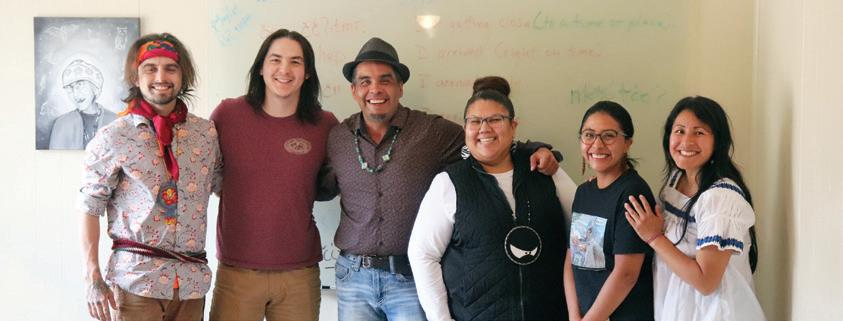
Other staff members have joined in the last few years. Pše grew up in Montana with her grandparents; both knew the Salish language but never taught it to her. She learned some words in Salish by ear, and she thought these words were in English until later when she learned Salish and she realized she already knew some of the words. More recently, Ctapsqé, who grew up on the reservation, joined the school as a teacher. Classes are currently being held at Ctapsqé’s grandmother’s house until they find a more permanent location.
The Spokane Language House became a reality in the summer of 2018. Classes started with the first N1 introductory level. Initially, 10–15 students started learning the Np ' oqínišcn language for 12 weeks. “The students expressed their feelings about how much their language meant to them and how learning their language changed their lives. It was beautiful to see their growth and healing. This language is very important for our hearts and healing, but it is important for the land because this is the language that the land speaks, that the animals speak, that the river speaks,” Šitétkw says.
The Spokane Language House has three levels: N1 (introduction), N2 (intermediate), and N3 (advanced). The teachers have not yet taught an N3 advanced level class; their goal is to teach the first class in October 2023. The
INDIGENOUS LANGUAGES
L–R: Spokane Language House Staff, Šitétkw, Ctapsqé, Sulustu, Pše, with Adriana Hernández (CS Staff) and Nati Garcia (CS Staff). Photo by Cultural Survival.
intention is to have a group of adults committed to learning the language full time for two years, and the school is currently advocating for funding to pay full-time salaries to those learning the language. “You can’t learn the language in one hour a week; you have to have a full immersion . . . the students will come to the house [to] cook, clean, and do stuff entirely in the language,” Sulustu says, thus creating a learning experience for students and teachers who will support each other. At the end of those two years of full immersion, there will be new fluent speakers of the Np ' oqínišcn language for the first time in 50-plus years.
Methodology
The Spokane Language House implements a Natural Approach Method, which was developed by the Salish School of Spokane. This method aims to have an immersive classroom in a sequential order where students can build upon their vocabulary and use everything they have learned. “This method is hard because no grammar or alphabet is taught. The idea is to train the ears first and have the students familiarize themselves with the sounds by listening attentively, then repeating, then listening again, and repeating and pointing. Recognition and comprehension are essential in this phase,” Šitétkw says.
The Natural Approach Method aims to have them speak the language using the words they learned since the beginning of the lessons. Students struggle to learn through this method, but that struggle is what makes them connect all the pieces together. “We tell our new speakers, ‘you are babies, and that is okay; you are just starting to listen and speak.’ Many emotions come out such as shame, guilt, pride, joy, and some inherited emotions. It is so important to cultivate a safe environment for the students. Overall the whole learning experience is a very transformative process,” says Šitétkw. The immersive teaching process can be challenging for the teachers as well, as they do not speak in English, even when the students are struggling. The teachers encourage the students to express their frustrations and feelings in their Native language.
Storytelling is an important component of the learning process. It allows the students to figure out all the puzzle pieces, and the beauty of the process is that they do it themselves. It is difficult for adults to focus full time on language learning with work and family obligations, so it is crucial to fundraise for salaries for those learning the language full time. These adults are the ones who will carry and transmit the language to our children.
Salish School of Spokane
Located in the city of Spokane, Washington, the Salish School of Spokane is a Native-led nonprofit that provides childcare and early childhood education in the Salish language. The Salish School of Spokane focuses on revitalizing the four Southern Interior Salish languages: nsəlxčin (Colville-Okanagan), nsélišcn (Spokane-Kalispel),
nxaʔmxčin (Wenatchee-Columbian), and sn̓čic̓úʔum̓šc̓n (Coeur d’Alene). Started by LaRae Wiley, a member of the Sinixt Arrow Lakes Band, and her husband, Christopher Parkin, the school opened its doors in September 2010. Year by year the school has grown and has had as many as 58 students. Since the pandemic, they have maintained an average enrollment of 33 students.

The Salish School of Spokane aims to educate children up to high school through the Salish language and ensure that children connect with their families, who they are, and where they come from through the language. While the school focuses on working with children, the staff also offers a community space for adults who want to learn the language, mainly parents of the children attending the school. The school additionally offers language classes to all staff members who work at the school.
At the Salish School of Spokane, all subjects (science, math, and music) are taught in the Salish language. The Salish School of Spokane envisions a learning environment where students are immersed in every aspect of the Salish language. Through a natural approach method, the students learn Salish with limited use of English. Staff members at the school have spent hundreds of hours reviewing archives, translating materials, and developing a curriculum that has been shared with other grassroots language revitalization projects in Washington State and Montana. Parkin and Wiley believe in the power of exchanging ideas with other language revitalization initiatives and sharing materials, curriculum, ideas, and methods. They agree there is a need to facilitate a space where the initiatives increasing the number of fluent speakers share their resources with other Indigenous relatives because, in the end, it is all about acting now as the Indigenous language loss rates grow.
Cultural Survival Quarterly March 2023 | 5
L–R: Christopher Parkin, LaRae Wiley, Adriana Hernández (CS Staff) and Nati Garcia (CS Staff) at the Salish School of Spokane.
Photo by Cultural Survival.
UNIVERSAL PERIODIC REVIEW OF GUATEMALA
Focuses on Indigenous Peoples’ Right to Freedom of Expression

On January 25, 2023, UN member States reviewed Guatemala’s human rights record during the 42nd Session of the Universal Periodic Review (UPR), a process carried out by the UN Human Rights Council. This was Guatemala’s fourth cycle of review since 2008. The final outcome of the 42nd UPR session will be adopted by the plenary of the Human Rights Council at its 53rd regular session in June 2023.
Cultural Survival traveled to Geneva with Adriana Sunun (Maya Kaqchikel) from the Maya Lawyers Association and Rosendo Pablo Ramirez (Maya Mam), founder of Radio Xob’il Yol Qman Txun, to advocate for Indigenous Peoples’ rights to freedom of expression and to their own community media at Guatemala’s UPR session.
The Universal Periodic Review consists of an assessment of the human rights situation of UN member States by peer States. It is considered to be an international peer review mechanism based on three reports: a self-assessment
by the country of its own human rights record; a report by the Office of the United Nations High Commissioner for Human Rights or other UN experts, entities, or treaty bodies; and a stakeholders report based on information sent by civil society (for which Cultural Survival jointly submitted a report with Sobrevivencia Cultural).
After taking the three reports under consideration, the Human Rights Council meets to evaluate the State. The meeting lasts three and a half hours, and every State has the chance to speak for one minute and make recommendations to the State under review. Civil society organizations do not have the right to speak in this session. A few months later, the final report including the outcome of the recommendations, which the State can either accept or note (reject), will be adopted at the plenary session of the Human Rights Council.
In Guatemala, Indigenous community radio stations still have not been legalized more than 26 years since this right was guaranteed in the 1996 Guatemalan Peace Accords and more than a year and a half after the InterAmerican Court of Human Rights (IACHR), the autonomous court of the Organization of American States, ruled in favor of the Maya communities in October 2021 in the case of Indigenous Maya Kaqchikel Peoples of Sumpango and others vs. Guatemala.
The court’s ruling declared the Republic of Guatemala “internationally responsible for the violation of the rights to freedom of expression, equality before the law, and participation in cultural life,” and established that Guatemala must create a simple and free procedure to obtain radio licenses for Indigenous communities and reserve part of the radio spectrum for Indigenous community radio. However, the State of Guatemala has refused to comply with or implement any of these obligations—even the most simple ones, such as publishing the court’s decision in an official newspaper both in Spanish and in the languages of the victims—and continues to criminalize Indigenous radio operators.
Ramirez comes from Todos Santos Cuchumatan in Guatemala and founded Radio Xob’il Yol Qman Txun in 2000. He says this was only possible because of the support from the people in his community, who “are the real owners of the radio station and the ones who keep
RIGHTS IN ACTION
Adriana Sunun (Maya Kaqchikel), Cultural Survival Advocacy Associate Natalia Jones, and Rosendo Pablo Ramirez (Maya Mam) at the UN Headquarters in Geneva, Switzerland.
Photo by Cultural Survival.
Natalia Jones (CS STAFF)
the radio functioning by listening to it in their homes.” He traveled to UN headquarters in Geneva to advocate for his community’s right to its own media. “A Peoples without their own media does not exist; we are in the 21st Century, and every Peoples should have their own media, especially when they are interested in having it,” he says.
There are 24 Indigenous languages spoken in Guatemala, and many linguistic communities are keen on having their own radio station as this is the only means by which they can express themselves in their native language publicly. Ramirez says the learning of their native language, coming from their parents and grandparents, is the most familiar way of communicating for them. “Speaking our own language feels safer,” he says, as Indigenous Peoples cannot fully and freely express themselves in the language of the colonizer.
“We are grateful for the international organizations that have accompanied us in this fight that started 12 years ago by taking our case to the IACHR, which ruled in favor of our right to Indigenous community media,” Ramirez said. However, he points out that the Guatemalan State has not complied with the ruling and has not informed the community about how they will implement it. “The State of Guatemala must respect the recommendations made by other countries, and that is our objective here,” said Ramirez.
One of the main concerns throughout the review process was the lack of independence and impartiality of the justice system. Many countries recommended Guatemala put an end to the harassment and criminalization against judicial officers who are investigating corruption related crimes against government officials or attacks on human rights defenders and journalists. Another recurring concern, noted by more than 20 countries in their recommendations, is to fully investigate all threats and attacks against human rights defenders and journalists by taking measures or adopting public policies that aim at their protection and cease their criminalization.
Besides these pressing concerns, many States made recommendations regarding Indigenous Peoples’ rights, such as providing a bilingual and intercultural education (Peru); enhancing efforts to protect Indigenous Peoples from forced evictions from their territories (South Africa and Iran); and respecting and implementing Free, Prior and Informed Consent mechanisms for decisions affecting Indigenous Peoples (Venezuela, Canada, Denmark, El Salvador, Finland, and Malaysia).
Colombia made a specific recommendation regarding the case of community radio stations, urging the State of Guatemala to consider the implementation and application of the IACHR ruling ordering Guatemala to recognize Indigenous community radio stations as distinguished media and to adopt the necessary measures to establish a simple and free procedure for obtaining licenses, as well as reserving part of the radio spectrum for Indigenous community radio and ceasing the criminalization of Indigenous radio operators.
Norway also recommended taking concrete actions to guarantee the right of Indigenous Peoples to prior consultation in accordance with ILO Convention 169, and to comply with the reparation measures ordered by the IACHR in the case regarding community radio stations.

Adriana Sunun is a lawyer working for the Maya Lawyers Association in Guatemala, an organization that supports Indigenous community radio stations in their fight for their right to their own media. Sunun said, “We are happy that this very specific recommendation was made by Colombia and Norway in terms of freedom of expression of Indigenous Peoples . . . however, there are also other problems related to Indigenous Peoples that we would have liked to hear as specific recommendations. The rest of the States made very general recommendations on Indigenous Peoples. The issue of evictions [of Indigenous Peoples from their lands] was mentioned by one State, but we would have liked to hear more about it.”
Sunun also said she would have liked to hear more about the specific criminalization of Indigenous leaders and communicators—not just human rights defenders and journalists in general—and recommendations on Indigenous women. “The State tried to mention advances in human rights issues, but a lot of those have been a result of the work of civil society organizations...and many others are just on paper, but not really implemented,” she said.
The State of Guatemala urgently needs to implement the 2021 Inter-American Court of Human Rights ruling and start taking effective measures to reserve part of the radio spectrum for Indigenous community radio and to fulfill every other international obligation it has towards Indigenous Peoples. Civil society can now use the specific recommendations made by UN member States to pressure Guatemala’s government to fulfill its rights obligations during the implementation phase of the review.
Cultural Survival Quarterly March 2023 | 7
Joshua Cooper, Adriana Sunun (Maya Kaqchikel), Cultural Survival Advocacy Associate Natlia Jones, and Rosendo Pablo Ramirez (Maya Mam) at Guatemala’s UPR Review in Geneva, Switzerland.
Photo by Cultural Survival.
GUÅHAN MEANS “WE HAVE”
Shaylin Salas (CHAMORU, CS YOUTH FELLOW)
From my apartment door I see a blue sky hovering over the tin roof of the neighboring house. I see the blended tops of coconut trees standing so close, their palms so intertwined that it’s hard to tell where one ends and the next begins. They wave at me in the wind. I see clouds, but not too many, and the plants that decorate the front of the neighbor’s house: aloe vera, snake plant, a potted plumeria, and a delicious bilembines (star fruit) tree. There are wild chickens running around below; they’re always in a hurry but I never know where they’re going. I see lined telephone poles and a busy road down to my right. Behind that, the bus stop and grocery store across the street, and behind that, a green wave of trees climbing up what is called Nimitz Hill.
In my left ear, I hear ocean water crashing against the old concrete boat launch. A stretch of land just 50 meters long separates the end of my building from the vast Pacific Ocean. In that space, there is a semi-paved, half grass/half gravel parking lot that fits two cars—three, tops—and then an area of grass and coconut trees. There are dozens of holes in the ground, all made by pång’lao (land crabs); I read that they burrow into the ground when they are molting or to escape stress caused by their environment. There is a mango tree to the right and a concrete platform to the left. The mango tree is tall and well established. It fruits twice a year, although the seasons seem to be shifting. The platform holds a large canopy tent, and under-
neath that are some chairs, tables, and a barbeque grill. And near that, an old grill pit that sits nearer the water where we burn plant and paper materials. I am lucky to live so close to the ocean. Housing is not affordable on Guåhan, especially oceanside. My building, though, is owned by a local family, and thankfully they don’t raise our rent to match the market.
In my right ear, I hear cars and semi-trucks speeding down Marine Corps Drive, the main (and only) road that spans the whole length of the island. Huge trucks drive by, coming and going from the island’s commercial port, carrying who knows what, heading to who knows where. The port used to be owned by the Navy but was turned over to the local government in 1951. It sits right next to the power plant. School buses, tour buses, and delivery trucks frequent the area because of the nearby middle school, the fact that this road leads to the Navy Base, and the gas station and grocery stores across the street. Motorcycles rev their engines as they roll by. Horns beep, tires screech, and *boom*—a collision. Just the other week, a Mitsubishi Pajero Mini hit the telephone pole at the entrance of the apartment property. It happened in the early hours of the morning, and by the time I woke up, the entrance was blocked by an ambulance and a line of police cars. The Pajero hasn’t been touched since. I can see it from the second floor walkway. It’s still here, remnants of a tragic story.
I live in a village called Piti on an island called Guåhan (popularly, Guam). Piti is a central village located south of Asan and Hagåtña, our capital, and north of Apra Harbor
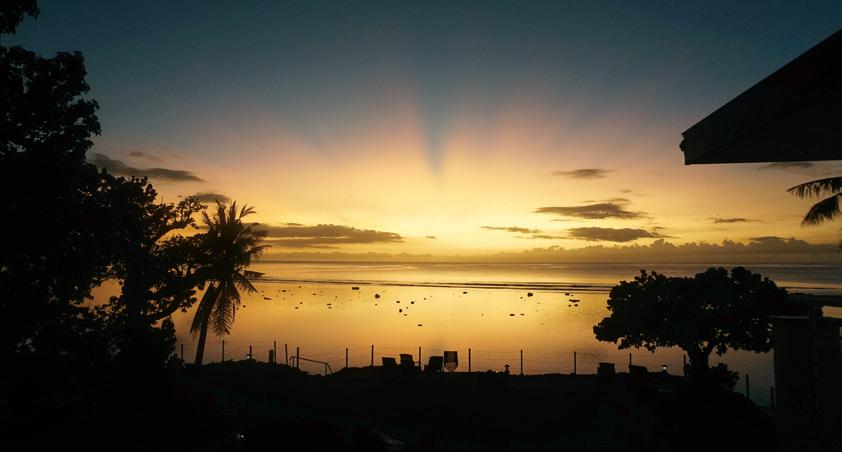
8 | www.cs.org
CLIMATE CHANGE
A Guåhan sunset, taken from the southern part of the island.
Photo by Shaylin Salas.
and Santa Rita. Guåhan is the southernmost island of an archipelago called the Mariånas, and her people are called CHamoru. In our language, Guåhan means “we have.” The CHamorus that settled the island thousands of years ago named her that because she had everything needed to support life and growth: an exceptional lens aquifer filled with fresh water, a surrounding reef that protected the island from powerful ocean waves, materials to build homes, and arable land. She is defined by her abundance. Unfortunately, today, Guåhan’s natural abundance is under threat. First, by colonization: Guåhan is a U.S. territory without the right to self-determination. Second, from militarization: since 1898, the U.S. has governed the island with intentions to expand war and destruction. And last, but certainly not least: climate change. The deeply interconnected cultures and ecosystems of the Pacific are especially vulnerable to climatic and environmental shifts.
Historically, the people of Guåhan have been subject to many atrocities. Colonization in 1668 resulted in the murder of the majority of the resident CHamoru people. Violent assimilation distanced us from our culture, spirituality, and values. The political division between Guåhan and the rest of the Mariånas islands separated families as well as traditions. Then there was aggressive and destructive militarization, theft of local and sacred land, unchecked development and exploitation, and government-sanctioned disregard for the environment and people. Still, we fight for our right to a healthy and thriving homeland.
In October 2022, I was standing outside the Guam Environmental Protection Agency building, chanting and holding up the flag of Guåhan. I was there because Prutehi Litekyan: Save Ritidian, a local grassroots group, organized a protest and presentation of testimonies at the EPA board meeting. The U.S. Air Force recently applied to renew their permit for continuing waste removal through open burn/ open detonation (OBOD) on the northern beaches of the island. OBOD is devastating to the air, land, and ocean, so of course we don’t want it. We were there urging the EPA to deny this permit. There were about 25 of us, chanting words of peace and justice, holding up flags, banners, and signs. All hopelessly in love with this island and its people.

Prutehi Litekyan: Save Ritidian is a prominent community action group on Guåhan. They advocate for demilitarization while bringing awareness to the ways that the U.S. Air Force impacts the northern region of the island. Other groups such as Protect Guam Water, Micronesia Climate Change Alliance, Hita Litekyan, Guahånom, Blue Ocean Law, and more, join them in the fight for a more harmonious and healthy future. Together we are stronger. But, the fight is far from over. Deeply ingrained colonialism often blocks us from gaining real traction.
Recently I met with Raphael Unpingco, the President of Sagan Kotturan CHamoru, or the CHamoru Cultural Center. The center was opened in 2006 by a handful of local artists and cultural practitioners and is managed by a nonprofit organization. It serves as a place to experience, learn, and practice CHamoru arts and culture. He and I discussed the importance of cultural legacy and how to preserve local culture in times of extreme climate and social change. In our conversation, he brought up the two native coconut tree varieties, Lakuguak and Kañuhon. He said that before the Department of Agriculture’s restrictions on the movement of live products to and from the island, people were bringing in all sorts of seeds and plants, including different coconut tree varieties. But over the decades, as the climate has shifted and we have suffered an infestation of the invasive rhinoceros beetle, many of the introduced varieties have succumbed to disease. It is only our native coconut trees that have proven to be resilient.
The Indigenous people of Guåhan are like the Lakuguak and Kañuhon. In the face of political and climate change, we, too, are resilient. Like our native trees, we are the ones that know our island the best. We know our place in the island ecosystem, and we know how to survive its ebbs and flows. Our island isn’t just a mass of land strategically located in the Pacific. It is our home, our source of life, and the heart of our culture. We are doing what we can to protect it and hoping that it is enough. But whatever the outcome may be, we will adapt as we have done for centuries. And we will prevail because it is in our name, Guåhan. We have everything that we need.
— Shaylin Salas (CHamoru) is a Cultural Survival Youth Fellow.
Prutehi Litekyan Save Ritidian organized a protest at Guam Environmental Protection Agency.
Photo by Czeska Cabuhat.
VERBENA MUXE Resisting Gender Binaries through Indigeneity
Mariana Kiimi (NA ÑUU SÀVI, CS STAFF)
The Isthmus of Tehuantepec is located in the southeast of Mexico between the states of Oaxaca and Veracruz. It is a region of diversity and cultural richness and is the cradle of the Binnizá (Zapotec) Peoples. Juchitán de Zaragoza is one of the most recognized cities in the region and is known for being the home of the Muxes, an Indigenous third-gender community known since pre-Columbian times. The Muxes have recently been attracting international attention by challenging the binary and gender roles imposed by settler colonialism, with Muxe activists working to raise their voices and push for the inclusion of their community nationally and internationally. Such is the case of the Colectivo Verbena Muxe, which has been gaining visibility and recognition for organizing their cultural demonstrations in other states in Mexico to promote the rights and inclusion of the Muxe community. There are two types of Muxe people, the gunaa and the nguiiu. The gunaa are people who were born as men but identify as women, are attracted to men, and take on female roles in society. Nguiiu Muxes were born as men and are attracted to other men, but do not dress or identify as women. From the Western and predominant view in today’s general culture, Muxes are usually considered part of the 2SLGBTQ+ community. However, this classification distorts the concept of the third gender by reflecting a culture that historically recognizes only two genders based on the sex assigned at birth. For Lukas Avendaño (Zapotec), an anthropologist and artist, it is difficult to find a single
definition of Muxe due to the many layers of Muxe identity in which not everyone identifies in the same way, and which defies heteronormativity.
In much of the existing literature about Muxes, it is said that they are widely accepted in their community and are considered an important part of their culture, and not something alien or new. However, it has not always been easy for them. Historically, Muxes have also been oppressed by some members of their community due to the prevailing machismo. This is the story of Joseline Sosa (Zapotec), who says that since she was a child, her family did not let her be who she was and she had to dress up in secret. Having a Muxe person in the family is often considered a blessing because there is a belief that they would stay at home their whole lives to work and take care of their family. Muxes tend to be assigned tasks associated with a female gender role, denying them certain professional opportunities, or in some cases, even an education. They frequently work as seamstresses, shopkeepers, or emigrate to other states or countries.
As Karla Rey (Zapotec), Muxe activist, comments in an interview with Cultural Survival, although historically Muxes have had challenges related to discrimination, homophobia, transphobia, and muxephobia, they have found acceptance. “Muxes have been very important figures within families, within society, even within the Zapotec matriarchy,” Rey explains. With this optimistic outlook, Rey and other compañeras formed the Colectivo Verbena Muxe in 2017 in the wake of a series of earthquakes that hit the Isthmus of Tehuantepec. One of the earthquakes was considered to be the largest in magnitude in almost 100 years and

10 | www.cs.org
All photos courtesy of Karla Rey.
2SLGBTQ+ VOICES
L–R: Naela, Malintzin, Karla Rey.
strongly affected the villagers, leaving many homeless and without their most precious belongings. Rey, Founder and President of the Colectivo, says they began by organizing a craft fair. They wanted to support some of the most affected Muxe in the region because “they all consider themselves as brothers and sisters.”
Rey says that little by little, more Muxe joined the group, such as Naila López (Zapotec) and Malintzin (Zapotec), and the Colectivo became more diverse and multidisciplinary. They began to capture the attention of more people and were invited to major events such as the Heart of Mexico Festival, as well as to teach dance classes of son and faldeo istmeño by the National Dance Coordination. Through such activities, they have been achieving their mission of the dissemination and inclusion of the Muxe community through cultural activities such as dance presentations, embroidery workshops, and lectures on their traditions and customs.
Similar to the Colectivo Verbena Muxe, there are other activists who seek to amplify the voices of their fellow Muxes and demonstrate their pride. Among them, Estrella Vázquez (Zapotec) has been featured nationally and internationally for being the first Muxe to appear on the cover of one of the country’s most popular magazines, Vogue Mexico & Latin America in 2019. Pedro Enrique Godínez Gutiérrez (Zapotec), better known as “La Kika,” for her activism of more than 20 years, is also a well known Muxe from the area. And the documentary “Muxes,” available on HBO Max, features Muxes recounting some of the challenges they have lived through history and how they have promoted their identity and resistance through culture by means of festivities known as Velas Istmeñas.
Like Rey, many Muxe have been forced to leave their communities in search of a better life, especially after the ravages of the COVID-19 pandemic. Rey says that they have appeared in different spaces such as universities, 2SLGBTQ+ community bars, marches, and other festivities, wearing their textiles as part of a political resistance. She says that they go to these places to honor their roots, doing things “with the heart, sharing who we are, that we are present, that we want to leave a legacy, that we want to be an example...to say that yes, we can live with pride, and say ‘this is my root, this is my culture, this is me,’ and proudly wear my costume, speak my language, and say ‘I am proudly Indigenous Oaxacan, I am Mexican, I am Muxe.’”
Rey says the Colectivo seeks to positively influence new generations to continue with their legacies, because although she was born in a time when they could already use their traditional dress and be more free, the challenge is to “leave a legacy that we strengthen, that we make new
spaces for new generations like ours, that it is seen that our pride in being Muxe goes beyond and that we want more things and that we want to reach happiness at the end of the rainbow.” She urges Indigenous children and youth to feel “proud of who they are, of their legacy, of their parents, of their grandparents, of their culture, that they never stop speaking their language, wearing their costumes and carrying their roots, who they are and who we are, that they never feel less than because we are, we resist, and we are still present. It is in us and in you to continue preserving a beautiful legacy of each one of you, of your people, of your culture.”
In Mexico, where macho and patriarchal attitudes still prevail, the visibility, promotion, and inclusion of third-gender people through culture, as in the case of the Muxes, breaks the paradigms and concepts that have been imposed on Indigenous Peoples by colonialism. The third gender challenges the gender binary, heteronormativity, and the patriarchy. Muxes want it to be known that they have always been here, and that other gender iden-tities have existed since pre-colonial times.

Cultural Survival Quarterly March 2023 | 11
L–R: Malintzin, Naela, Karla Rey.
Despite Historic Participation
INDIGENOUS PEOPLES ARE AGAIN SIDELINED IN MAJOR DECISIONS AT COP27
Bryan Bixcul (MAYA TZ’UTUJIL, CS STAFF)
The two-week 27th Conference of the Parties of the United Nations Framework Convention on Climate Change (UNFCCC COP27) held in Sharm El Sheikh, Egypt, came to a close on November 19, 2022 with largely unfavorable outcomes for Indigenous Peoples.

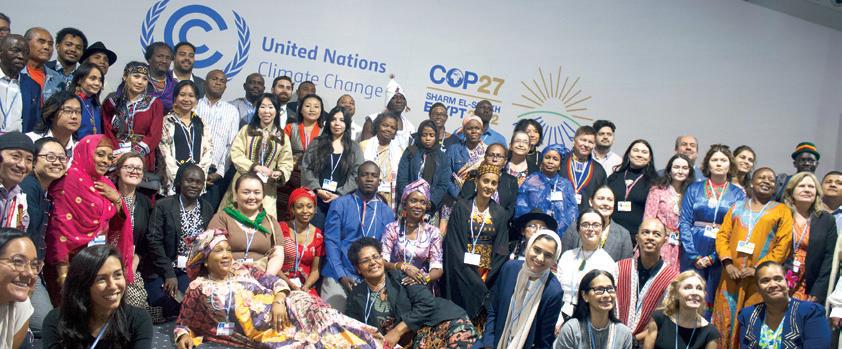
The Intergovernmental Panel on Climate Change declared a “code red for humanity” in its most recent report outlining how human activity is altering the planet’s climate in unprecedented and sometimes irreversible ways. Burning of fossil fuels, unsustainable diets, and urbanization are causing climate change, and this is a direct threat to the lives of Indigenous Peoples. Indigenous Peoples are some of the most vulnerable and the first to experience economic and non-economic losses caused by climate change, including loss of livelihoods, displacement, violence, loss of cultures and languages and the holistic impacts on Indigenous Peoples’ identities, ceremonies, and Traditional Knowledge.
Indigenous Peoples hold solutions to climate change mitigation and adaptation, and their deep connection to the land makes them the best experts of their lands. However, Indigenous Peoples are yet to be given a seat
at the table and are having to operate in colonial systems that generally refuse to acknowledge the solutions they offer.
Monumental Participation of Indigenous Delegates
COP27 was a challenging summit due to the high priced food and accommodation, which limited participation from organizations that are already severely under-resourced. Still, the Indigenous contingency, with more than 300 delegates, was one of the biggest at COP27. Indigenous leaders came to Egypt from every corner of the world to share their stories, show solidarity with each other, and present their solutions for climate change mitigation and adaptation.
The Indigenous Peoples Pavilion, organized by the International Indigenous Peoples’ Forum on Climate Change, hosted over 70 side events by Indigenous delegations from around the world, giving voice to the issues most important to Indigenous Peoples and their communities. The Indigenous Peoples Pavilion made history by having an Indigenous sponsor, NDN Collective, for the first time. Indigenous leaders carried the message, speaking about the need for upholding the rights of Indigenous Peoples in all decisions made, including those related to climate financing and the just transition to a green economy.
12 | www.cs.org
COP27
Traditional Knowledge holders and members of the Indigenous Peoples Forum on Climate Change.
All photos by Cultural Survival.
Fossil Fuels Are Here for the Long Run
According to the UN Environment Programme’s Emissions Gap Report 2022, there is no credible pathway to 1.5 ℃ in place. The world is already at more than 1 degree of warming and is on track for more than 2 degrees of warming in the coming decades. The current policies of big polluters are putting the world on a path to climate catastrophe, yet at COP27, as it happened at COP26, reducing the use of fossil fuels was not in the final agreement. (Notably, the oil industry reportedly had around 630 lobbyists present at the summit.)
COP27 failed to establish any true and meaningful agreement on how to get to the root of future problems by reducing fossil fuel consumption. There is only one reference to fossil fuels in the Sharm el-Sheikh Implementation Plan, which calls for “accelerating efforts towards the facedown of unabated coal power and phase out of inefficient fossil fuel subsidies.” The dearth of language on fossil fuels is a slap in the face of the most vulnerable communities already suffering the impacts of climate change.

The Indigenous Peoples’ Forum’s closing statement declared, “The urgency and hopes we heard from world leaders and parties in week one has quickly been overshadowed by false solutions which do not reduce emissions at source—including a reliance on carbon markets, ‘Net Zero’ frameworks, and ‘nature-based solutions’—that delay real reductions, replicate new forms of climate colonialism, and fall short of 1.5 °C. Weak or absent language on human rights, the rights of Indigenous Peoples, and the rights of persons with disabilities in many agenda items, means that this COP has compromised on the uncompromisable. This is evident especially in Article 6 with a rushed conclusion removing many safeguards and references to rights, thus failing to uphold parties’ existing commitments under other agreements such as [the UN Declaration on the Rights of Indigenous Peoples], and leaving our communities at risk of carbon colonialism that further encroaches on our territories and ecosystems.”
Increased Risk of Carbon Colonialism
Regrettably, the sole reference to Indigenous Peoples in the preambular text of the Guidance of the mechanism established by Article 6, paragraph 4 of the Paris Agreement does not do nearly enough to protect the rights of Indigenous Peoples. As noted by the Forum, there was a rushed conclusion that removed many safeguards and references to rights. Indigenous Peoples are totally absent in the operative text, even though many of the world’s major carbon sinks are located on Indigenous Peoples’ territories, which are targeted for “forest conservation schemes” that in many cases have resulted in land dispossession, fortress conservation, and ultimately forced removal of Indigenous Peoples from lands they have stewarded for millennia. Indigenous Peoples and our allies must remain vigilant and keep working to ensure that references to Indigenous Peoples’ rights, including the UN Declaration on the Rights of Indigenous Peoples, are included in the operative text to ensure that rights are not violated by actors looking to profit at the expense of Indigenous Peoples’ knowledge and territories.


 Youth delegates from Rapa Nui.
Shirley and Val Hunikuin (Hunikuin), delegates from Coordination of the Indigenous Organizations of the Brazilian Amazon (COIAB).
Panelists and attendees at Weaving Perspectives Across Regions: The Need for Equitable Funding for Indigenous Women’s Leadership, Movement Building & Climate Solutions panel.
Panelists for Empowering Communities for a Just Transition panel.
Youth delegates from Rapa Nui.
Shirley and Val Hunikuin (Hunikuin), delegates from Coordination of the Indigenous Organizations of the Brazilian Amazon (COIAB).
Panelists and attendees at Weaving Perspectives Across Regions: The Need for Equitable Funding for Indigenous Women’s Leadership, Movement Building & Climate Solutions panel.
Panelists for Empowering Communities for a Just Transition panel.
Unfit Climate Finance Solutions
Many saw the establishment of the new Loss and Damage Fund as a major breakthrough at COP27. However, many questions remain: How will it work? Who’s going to pay? Which countries will get the money? How much money will be available and when? Will it come from governments or also the private sector?
A Transitional Committee on the operationalization of the new funding arrangements was established to provide recommendations for the management of this new fund for consideration and adoption at COP28, in Dubai, United Arab Emirates, in 2023. Most concerning is that the final text of the agreement has no references to Indigenous Peoples’ rights, which is especially concerning given that Indigenous Peoples are among the most affected by climate change.

The current climate financial mechanisms sideline the very people stewarding 25 percent of the Earth’s
surface, which contains 80 percent of the remaining biodiversity. If the current model for climate financing doesn’t change, actions on loss and damage and climate mitigation and adaptation will not be effective. This is the case of the multi-billion dollar pledges made by philanthropies in partnership with governments in Glasgow in 2021: a recent report published by Forest Tenure Funders Group says that only seven percent of funds from the $1.7 billion pledge made in Glasgow have gone directly to Indigenous Peoples and local communities. Moreover, despite years of advocacy at the Green Climate Fund (GCF), not a single Indigenous-led organization has been accredited or received funding from the Fund. Indigenous Peoples from the seven socio-cultural regions should be at the center of climate finance decisions.
Developments in Progress
There was no decision reached about The Global Goal on Adaptation at COP27, so the negotiations will continue
INDIGENOUS VOICES FROM THE FRONTLINES OF CLIMATE CHANGE
The following are excerpts from interviews with Indigenous delegates at COP27 conducted by our Indigenous Rights Radio producers. Listen to over 40 interviews in full at rights.cs.org/cop27.
Our Cultures Are Tied to Our Environment
Lisa Qiluqqi Koperqualuk (Inuit) President, Inuit Circumpolar Council Canada

In the Arctic, we are a people who have created our culture based around the whole Arctic environment.
We live in the tundra and we rely on the marine ecosystem. Our culture is intricately tied to the marine ecosystem, our territory, the land. We rely on marine mammals for subsistence. We have been impacted by climate change in several ways. There’s coastal erosion in our communities. There’s the melting of permafrost. There is also the decrease of ice in our waters. That means
that the autumn season is longer now rather than having winter come sooner and the water turn to ice sooner, as it usually does by November. At times, it’s no longer becoming ice until December, perhaps January. And that impacts our communities because our harvesters are using the ice as the highway. The permafrost in Alaska has been used as natural freezers, and those are melting as well.
So the melting of ice and permafrost impact the survival of our culture because our knowledge is transferred from generation to generation. If that knowledge is not able to be shared from one generation to the next, then it’s a loss of culture as well. Infrastructure is also damaged because when infrastructure is built above the permafrost and the permafrost is melting, it creates damage to infrastructure. We have to pay attention to airports. The airstrips can be damaged, and the airstrips are our link to the outside world because we don’t have roads that connect our remote communities to the large centers. Those airplanes bring a lot of supplies and also passengers.
14 | www.cs.org
COP27
in 2023. The program for discussions on this topic references Indigenous knowledge, wisdom, and values of Indigenous Peoples, which is a welcome development, and there is hope for more references to the rights of Indigenous Peoples to be included when talks resume. The Global Goal on Adaptation was established in Article 7 of the Paris Agreement with the goal of building up adaptive capacity, strengthening resilience, and reducing vulnerability to climate change.
Indigenous Peoples need to increase their participation at international venues and forums to put more pressure on national governments, big polluters, and international mechanisms to produce real policy reforms that address greenhouse gas emissions and define a proper mechanism for climate finance that actually reaches Indigenous communities while upholding a human rights-based approach and respecting the rights of Indigenous Peoples.
As Indigenous Peoples, we want to take part in the decision making process in a way that our voice is included or heard within the decision making process, that our Indigenous perspectives, our Indigenous knowledge be included in those processes and the decision around adaptation, mitigation, and loss and damage funds; that our right to self-determination is part of this whole process.
We Are Paying a High Price for the Green Economy
Lars Anders Baer (Saami)
Member of the Saami Parliament, Finland and Reindeer Herder
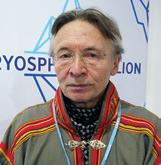
There has been a dramatic change in the climate. Nowadays we cannot use our traditional clothes; it is too wet. When you talk about adaptation and our relations with the government, we have a problem with the new green economy in our area . . . mining for minerals for building new batteries, copper mining, gas, oil. We are paying a high price for the green economy. This has put pressure on our traditional lands and also on our traditional economies. We face similar challenges as in the Arctic. We can also imagine our friends in Brazil, our friends in the Pacific, or even in Nepal. The ice is melting and this is going to change our life quite dramatically.
In our area the climate change is happening much faster. The ice is literally melting under our feet.
Without the Rights of Nature There Can Be No Us
Great Grandmother Mary Lyons (Anishinaabe)
Member, Women of Wellbriety Int’l Council and UN Observer on Women’s and Indigenous Issues
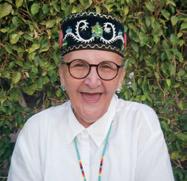
One of the reasons I feel that it’s important for us to be at the COP is that they need to hear Indigenous voices. We make up the majority of the planet and we are the original caretakers and gardeners of our lands.

The rights of nature are very important; without the rights of nature, there can be no us. We can fight for our rights, but if the rights of nature aren’t there for us to live upon, then it’s pointless. We have to be recognized, and we have to also recognize that we must take care of the air. If we keep putting everything in this air, all human life, all tree life, all animal life, everything is going to be affected by it. When you start breaking into the ground, you’re going to start disturbing the memory of the water.
Whoever is making these decisions and keeping us Indigenous people down, they really need to know that our young people are coming up and they’re not going to buy into this nonsense that they’ve been pushing on us. They’re coming up in force. Not only are they realizing that air, water, fire, and earth shows no prejudice, they’re uniting and they are becoming humanity as it was once introduced
Cultural Survival Quarterly March 2023 | 15
Cultural Survival’s COP27 delegation, L-R: Dev Kumar Sunuwar (Koĩts-Sunuwar), Polina Shulbaeva (Selkup), Lesley Muñoz Rivera (Colla) Bryan Bixcul (Maya Tz’utujil), Edson Krenak Naknnanuk (Krenak), and Shaldon Ferris (Khoisan).
to us. We’re no longer standing in that division for them to keep us in these segregated places and telling us that we are less. We are the majority of the people, the original gardeners. We know organic lifestyles. We are the seed holders, and we must stand strong and protect that.
Climate Change Affects Indigenous Peoples in Cameroon
Aeshatou Manu (Mbororo)
Secretary General, African Indigenous Women Organization Central African Network (AIWO-CAN)

limate change has really impacted our lives, especially that of women and girls. Women are mostly affected in areas of agriculture production, food and nutrition security, health, water and energy, climate related disasters, migration, and conflict. We now see the appearance of new diseases and water shortages. As pastoralists, we face loss of pastures and animals due to long dry seasons and the appearance of new species like the Bokassa that destroy the environment. Changing seasons, high temperatures, increased sun intensity affect communities and the farming calendar which lead to poor yields and lack of pasture for animals, causing hunger and malnutrition. Our forests are being destroyed by illegal logging, deforestation, forced evictions of communities. I call on the different stakeholders to respect the pledge they took at COP26 and equally give direct finances to Indigenous organizations to address issues at grassroots levels. Indigenous Peoples are the keepers and protectors of the environment and should be involved. Our rights must be respected and ensure climate justice for all.
Indigenous Peoples Have Solutions
Yolene
Patricia Koteureu (Kanak)
Resource Person for Customary Council, New Caledonia

omen are really involved in the preservation of our culture, and they’re the first custodians of our stories. We have a global project at the country level to have our Kanak mats reinstated in all the customary institutions, and a bill has been put in congress to be voted on to cancel any import of external artifacts to preserve our cultures. The women weavers are actually doing the work in the chiefdoms in their communities, and at the institutional level as well. Women are already involved. The movement
is already awakened; now we just need to coordinate. We have mining industries that are destroying our nature, our biodiversity, marine biodiversity, as well as our soil. We are encouraged by our brothers being chiefs at the customary senate. We now need more involvement from other Indigenous communities. In the Pacific, we’re so tiny, but when you see those people, those women especially, raising families, there will be a shift in our consciousness. There will be more awareness and actions because solutions are here already—they are being held by Indigenous Peoples.
Young People Must Join the Fight
CSara Elvira Kuhmunen (Saami) Youth Activist

Climate change is a very big issue for us because it’s affecting our whole culture, especially reindeer herding, because we live so close to nature. We have these winters where it’s starting to rain and that’s really bad for us because then there’s an ice layer on the ground and it makes it difficult [for the reindeer] to find food. The other thing we are affected by is so-called green energy. For us it’s not that green because it’s affecting our land and waters. When you put up windmills, our reindeer don’t want to be close to them because they are afraid of them. Another thing is these green mines. They are a really big problem for us and a really big issue. And a third is these renewable forest cuts; that’s a really big issue in Sweden. A thing Saami youth can do is to be engaged in these issues and make their voices heard, fight against this. We have to raise our voices now. It’s more important than ever. If we don’t do it, we don’t have any future left or any culture.
Ensuring the Rights of Indigenous Women
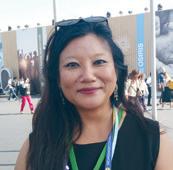 Mrinalini Rai (Rai) Director, Women4Biodiversity
Mrinalini Rai (Rai) Director, Women4Biodiversity
WWhat the Climate COP really needs to do is realize and pursue these aspirations that Indigenous women have been asking for, not for the first time. It has been a long process and it’s really important that they work on the gender action plan. We’re also looking at financing, one of the biggest focuses of COP27. We should make sure that it’s gender responsive, regardless of whether it is any kind of financing. Because sometimes you just assume that the
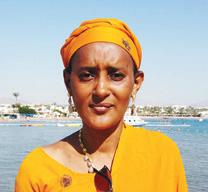
16 | www.cs.org
COP27
women will be regarded and it just never becomes a priority, unless it is written down in a financing COP decision. The budgeting should be gender responsive and all the policies and processes that are all going to be discussed should definitely ensure that women’s rights are included and concretely written down.
We Need Direct Support to Restore Loss and Damage
Grace Balawang (Kankaney Igorot)
Deputy Coordinator, Tebtebba
hen I left to come here, there was a big typhoon affecting our communities. There were land erosions, there were displacement of our villages because of these flash floods, and there were some casualties. This is one of the main problems in the Philippines. Typhoons are a very regular climate change impact. They displace our communities and our economies especially, since we are agriculturally based. We are joining the Climate Justice Action campaigns to negotiate for a financial mechanism for loss and damage, especially damage that is being caused by all of these floods. At the same time, Indigenous Peoples are also very much impacted by droughts. Our livelihoods and econom ic life is disrupted because of this climate change impact that we experience. We have been negotiating for direct support in terms of logistics as well as funding support directly to Indigenous communities, because most of the time Indigenous Peoples are not included in direct access for funding. We have been pushing for that with the Stand ing Finance Committee with the Green Climate Fund. Because of the damages experienced by our local communities, we really need direct support to restore our livelihoods and economic systems.
We Want Governments to Recognize Indigenous Knowledge
Jennifer Lasimbang (Kadazan)
Former member of Sabah State Legislature


My community (Sabah, Malaysia) is divided into many different parts.
We have our coastal community, we have communities living by the rivers, and also in the mountains. What climate change is doing to us is mainly intensifying rainfall and unpredictable weather. You can imagine the flooding that’s happening in my area. We are mostly
agriculturists. We plant wet rice, so we can’t predict any more when it’s the planting season and when it’s the harvest season. There’s just way too much damage to our livelihood and our territories. We are losing our natural resources. There’s massive landslides on the mountain. Our island communities are slowly suffering from the rising sea.
WWhat I really want as an Indigenous person is the recognition of what Indigenous Knowledge can contribute towards mitigating the effects of climate change. We really need the government to recognize the rights of the people, the security of tenure on where we live, our lands, our territories. We really need a [declaration] of a climate emergency and action. We Indigenous people on the ground are trying our best with very little resources. On top of not being recognized, we do not have the resources to do more based on what we have already known for thousands of years. We really need the government to take action to respect the rights of the Indigenous people and also the knowledge behind what Indigenous Peoples can do. Let’s work together. We are here to help. We are here to ensure that we have a future for our children.
It Is Time to Implement the Paris Agreement
Tunga Rai (Rai)
Nepal Federation of Indigenous Nationalities
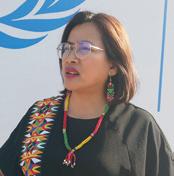
We have a lot to say and a lot to offer to the climate discourse and climate change negotiation. Nepal is so diverse in terms of ecology, in terms of ethnicity, and also the different type of ecology in the country. The impact of climate change is diverse and urgent in our communities because in the mountains the snow is melting so fast, and in the lowlands there is flooding. Indigenous Peoples are in the forefront of negative impacts of climate change because of the lack of capacity and also lack of access to services and policy discourse.
It’s time to get the Paris Agreement implemented. Indigenous Peoples have a lot to say and bring to the COP discussion. Negotiators, policy makers, decision makers have to listen to Indigenous Peoples because [we] have distinct experiences in terms of climate change and adaptation, mitigation and adaptation technology. We have a lot to offer in climate change mitigation and adaptation. We are just not the stakeholders, we are the right holders of our land. The Paris Agreement will be implemented on the ground, on the land that is our land. That will impact us in either way. We want it to be impacted in a positive way, not in negative ways.
Cultural Survival Quarterly March 2023 | 17
Convention on Biological Diversity COP15’S WINS AND LOSSES FOR INDIGENOUS PEOPLES
 Galina Angarova (BURYAT, CS STAFF) and Bryan Bixcul (MAYA TZ’UTUJIL, CS STAFF)
Galina Angarova (BURYAT, CS STAFF) and Bryan Bixcul (MAYA TZ’UTUJIL, CS STAFF)
On December 19, 2022, the COP15 presidency adopted the KunmingMontreal Global Biodiversity Framework at the 15th Conference of the Parties to the UN Convention on Biological Diversity (CBD COP15) in Montreal, Canada. It is now a non-binding agreement among 196 nation States who are parties to the UN Convention on Biological Diversity.
For the last four years, many Indigenous delegates worked under the umbrella of the International Indigenous Forum on Biodiversity leading up to the adoption of the Kunming-Montreal Global Biodiversity Framework. It was a collective effort of Indigenous leaders from all seven sociocultural regions of the world, who worked tirelessly to ensure that the newly adopted Global Biodiversity Framework contains 20 references to Indigenous Peoples, 8 references to Traditional Knowledge, 2 references to Free, Prior and Informed Consent, and 1 reference to the UN Declaration on the Rights of Indigenous Peoples throughout the text.
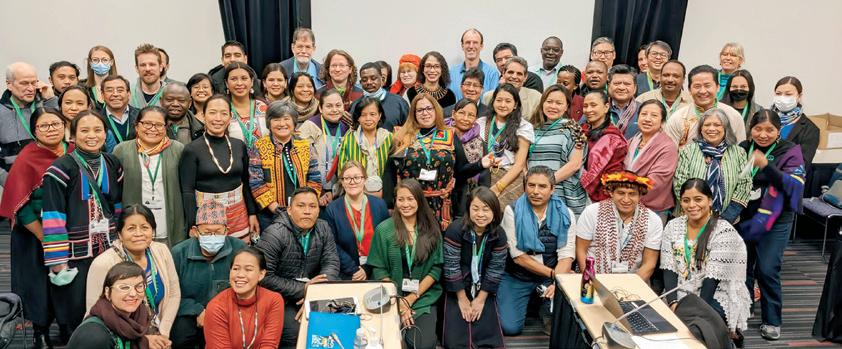
The text acknowledges the contributions and rights of Indigenous Peoples as “custodians of biodiversity and partners in conservation, restoration, and sustainable use.”
Furthermore, it calls for Indigenous Peoples’ rights, Traditional Knowledge, worldviews, values, and practices to be
respected throughout its implementation, and “full and effective participation in decision-making” of Indigenous Peoples in accordance with the UN Declaration on the Rights of Indigenous Peoples and other international instruments.
The new Framework doesn’t do enough to protect Indigenous Peoples’ rights and territories, however, and uses dangerous terms like “nature-based solutions” in two targets. The use of these terms enables big polluters— the very people responsible for the destruction of the environment—to continue commodifying Mother Earth, and distracts society from true solutions. Indigenous Peoples hold the true solutions for conservation, restoration, and sustainable relationships with biodiversity.
Areas of Concern
Target 3, more commonly known as 30x30, relates to the plan to conserve 30 percent of terrestrial, inland water, and coastal and marine areas by 2030. The target refers to “well-connected and equitably governed systems of protected areas and other effective area-based conservation measures, recognizing Indigenous and traditional territories, where applicable.” At a glance, it would appear that Indigenous Peoples have been recognized in this target. However, the language adopted in the text of the target opens room for interpretation on national levels in ways that could be detrimental for Indigenous Peoples. Who will “recognize” and where is it “applicable”? Defining these
18 | www.cs.org
COP15
All photos by Cultural Survival.
Members of the International Indigenous Forum on Biodiversity in Montreal.
terms will remain the prerogative of national governments that have historically marginalized, displaced, and annihilated Indigenous Peoples.
Initially, Indigenous representatives recommended officially recognizing Indigenous territories as a third category of area-based conservation (along with Protected Areas and Other Effective Area-based Conservation Measures). Identifying Indigenous and traditional territories as a separate category would have strengthened Indigenous Peoples’ self-determination over the decisions being made about their territories, including those related to conservation measures. Historically, conservation schemes have resulted in fortress conservation, harassment, and displacement of Indigenous communities, and many Indigenous leaders have expressed their concern over this plan becoming yet another land grab if the rights and governance of Indigenous Peoples are not adequately recognized. However, towards the end of the negotiations, the words “recognizing” on the front end and “where applicable” after “Indigenous and traditional territories” were introduced to dilute the language and it was adopted as such.
Target 15, which is related to monitoring, assessment, disclosure, and reporting of businesses’ impacts on biodiversity, has been an area of concern since the negotiations for the Global Biodiversity Framework began four years ago, specifically related to the omission of reporting of impacts on human rights in the text. The current target permits voluntary self-reporting and fails to offer proper regulatory and redress mechanisms that would ensure that companies monitor, evaluate, and disclose information about their impact on biodiversity. Government and third party oversight is essential to regulate and ensure accountability of business impacts on biodiversity. Any financial flows impacting biodiversity and the lands, territories, traditional lifeways, and well being of Indigenous Peoples must be subject to reporting and fully measurable, both qualitatively and quantitatively. Reporting and responsibility of businesses must include restoration of disturbed territories and ecosystems, accounting of collateral and deferred damage, payment of fines and compensations, and prevention and resolution of Indigenous human rights violations and other conflicts that arise.
Removal of Gender Inclusive Language
Language acknowledging gender diversity was deleted from the text of the Gender Plan of Action, one of the plans approved by COP15, at the proposal of Malaysia, Algeria, Bahrain, Saudi Arabia, and the United Arab Emirates, and supported by The Holy See (the Vatican) even though this last entity is not a party to the Convention. The deleted text recognized genders “in all their diversity” and “sexual orientation” and “gender identity.” Some States strongly opposed removing these references, but they compromised to get the plan approved. The deletion sends a violent
message to the millions of 2SLGBTQ+ people living under oppressive regimes and in situations of prejudice and harassment. States need to uphold their human rights commitments and ensure that all Peoples are acknowledged and their rights protected in any decisions made at global and national levels.
Resource Mobilization
Parties agreed to establish a new Global Biodiversity Framework Fund, which is supposed to provide the resources needed to achieve the new Global Biodiversity Framework’s 2030 global targets and the 2050 vision, however, it will still operate under the supervision of the Global Environmental Fund. The Global Environmental Fund has been exceptionally slow to meet the challenge of biodiversity loss, and the bureaucratic processes required for Indigenous Peoples to access funds deter grassroots efforts. The Global Environmental Fund will need significant reform to be able to deliver on its mandate. Direct and equitable access to financial resources for Indigenous Peoples is fundamental. Indigenous Peoples must be able to manage funding as full and equal partners in biodiversity conservation.
Notable Positive Developments
Decision 15/9 calls for the fair and equitable sharing of the monetary and non-monetary benefits from the utilization of genetic resources, Digital Sequence Information on genetic resources, and Traditional Knowledge associated with genetic resources with Indigenous Peoples, and that
Top: Indigenous delegates speaking at Key Advancements by Indigenous Peoples around the Globe panel at COP15’s Indigenous Village.

Below: Indigenous leaders meeting with UN SecretaryGeneral António Guterres (center).

Cultural Survival Quarterly March 2023 | 19
the benefits arising from it should support conservation, sustainable use of biodiversity, and Indigenous Peoples in particular. The agreement establishes a new Multilateral Mechanism of Benefit-Sharing, including a global fund. Indigenous Peoples must remain vigilant as negotiations continue in the lead up to COP16, to be held in late 2023 in Ankara, Turkey.

Targets 5 and 9 address the need for respecting and protecting the customary sustainable use of “wild species” by Indigenous Peoples. This is important, since in many parts of the world Indigenous Peoples are attacked and prosecuted for engaging in customary use of natural resources in their own territories when these happen to overlap with protected areas. States are now required to reform their laws and recognize the customary sustainable use of wild species by Indigenous Peoples.
Target 22 calls for decision-making to be done fully and equitably, “respecting the cultures and rights over lands, territories, resources, and Traditional Knowledge of Indigenous Peoples” with “a gender-responsive approach” and with the participation of women and girls, young people, and people with disabilities. Furthermore, it calls for the “full protection of environmental human rights defenders.” The recognition of environmental human rights defenders is groundbreaking, and should be the start of discussions at national levels to develop more robust laws and policies for their protection.
Finally, the battle for the implementation of the Global Biodiversity Framework will be fought at the national and local levels. States should immediately start reforming their laws to ensure meaningful progress on biodiversity protection and respect for the rights of Indigenous Peoples over their lands and territories. State governments are called to fulfill their obligations to respect, protect, and uphold the rights of Indigenous Peoples and to engage with Indigenous Peoples on the implementation of the Global Biodiversity Framework in good faith. Cultural Survival recognizes the limitations of the framework and urges Indigenous Peoples and our allies to remain vigilant and work together to ensure that the new Global Biodiversity Framework does not result in yet another wave of commodification of Mother Earth.
KUNMING-MONTREAL GLOBAL GOALS FOR 2050
GOAL A
The integrity, connectivity, and resilience of all ecosystems are maintained, enhanced, or restored, substantially increasing the area of natural ecosystems by 2050; Human induced extinction of known threatened species is halted, and, by 2050, extinction rate and risk of all species are reduced tenfold and the abundance of native wild species is increased to healthy and resilient levels; The genetic diversity within populations of wild and domesticated species is maintained, safeguarding their adaptive potential.
GOAL B
Biodiversity is sustainably used and managed and nature’s contributions to people, including ecosystem functions and services, are valued, maintained, and enhanced, with those currently in decline being restored, supporting the achievement of sustainable development for the benefit of present and future generations by 2050.
GOAL C
The monetary and non-monetary benefits from the utilization of genetic resources, and Digital Sequence Information on genetic resources, and of Traditional Knowledge associated with genetic resources, as applicable, are shared fairly and equitably, including, as appropriate with Indigenous Peoples and local communities, and substantially increased by 2050, while ensuring Traditional Knowledge associated with genetic resources is appropriately protected, thereby contributing to the conservation and sustainable use of biodiversity, in accordance with internationally agreed access and benefit-sharing instruments.
GOAL D
Adequate means of implementation, including financial resources, capacity-building, technical and scientific cooperation, and access to and transfer of technology to fully implement the Kunming-Montreal Global Biodiversity Framework are secured and equitably accessible to all parties, especially developing countries, in particular the least developed countries and small island developing states, as well as countries with economies in transition, progressively closing the biodiversity finance gap of $700 billion per year and aligning financial flows with the Kunming-Montreal Global Biodiversity Framework and the 2050 Vision for Biodiversity.

20 | www.cs.org
COP15
International Indigenous Forum on Biodiversity’s press conference at COP15.
Photo by Cultural Survival.
INDIGENOUS LEADERS SPEAK ON PROTECTING BIODIVERSITY
The following are excerpts from interviews conducted at COP 15 with Indigenous delegates. Listen to the full interviews at rights.cs.org/COP15.
If You Destroy the Community Conserved Area You Destroy the Ecosystem
Giovanni Reyes (Kankanaey-Igorot)
President of the Philippines Indigenous Peoples’ and Community Conserved Areas and Territories Association
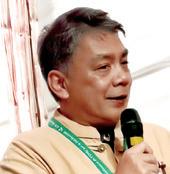
he Philippine ICSA Consortium has a membership of 16 partner communities all over the Philippines. We are engaged in critical partnerships with government and private groups, NGOs, and civil society organizations with respect to protecting the remaining key biodiversity areas in the Philippines, which coincide with the territories of Indigenous Peoples. In a person, the most protected part of the body is the heart. If you strike at the heart, then you are going to kill the body. In the same way, when Indigenous communities protect their community conserved areas, [they are protecting] the heart of their traditional territory. If you destroy the community conserved area, then you will destroy the ecosystem, you will destroy the source of food, you will destroy the water. In the Philippines, where we engage in conservation to sustain the contributions of Indigenous Peoples on biodiversity, we do things like mapping. We translate Indigenous Knowledge about territories, about the extent of boundaries, and about the state of health of the forests into their physical dimension in the form of maps. [Then we] have evidence-based material to show to policymakers, for example, that these are the boundaries that are critically conserved and must not be destroyed. We provide evidence to show that the watersheds in our ancestral territories are the source of life for Indigenous communities as well as lowland farmers who are producing rice.
In the Philippines, 20 to 25 million lowland farmers are directly benefiting from the waters that come from our conserved areas. These farmers produce rice for the consumption of more than 60 to 70 million Filipinos. Imagine
what happens to these 70 million Filipinos if you destroy the watersheds that belong to territories of Indigenous Peoples. Other effective conservation measures comparable to Indigenous community conserved areas are shaped by hundreds of years of practice. In discussions about the provisions, there needs to be a connection between the commitments to the global biodiversity framework and collectively owned Indigenous lands.
TThere Is Hope for The Future
Chrissy Grant (Kuku Yalanji and Torres Strait Islander) Founding Member and Chair of the International Indigenous Peoples’ Forum on World Heritage
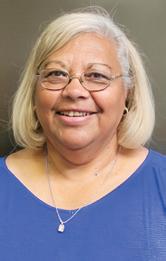
We do a lot of work around Indigenous Protected Areas (IPA) and our joint management of national parks, which we negotiated for four years with the Queensland government to hand back to us. In five years we want to be in a position where we are building our capacity, so that in 10 years we actually look at self-management. We have an IPA over three different areas. We dedicated areas that we thought were safe enough to be an IPA to do restoration across the lowlands of the ranges of the national parks, but also looking at cultural heritage and economic and social benefits that we get out of the IPA.
The IPA was a program that was introduced in 1997 in Australia, and at that time [was] a government program. They declared that it was in consultation with Aboriginal people, but after a while the Aboriginal people wanted to be in the driver’s seat, to be able to say we will dedicate these parts of our territory, land, and waters to the IPA program and we will manage it.
The Aboriginal people are now in the driver’s seat as to what they dedicate towards the IPA. We have rangers that work on the IPAs that allow them to be engaged in the management and monitoring of the species, to be able to
Cultural Survival Quarterly March 2023 | 21
actively look after our cultural heritage sites, to look at the social benefits. A lot of that might be about health, education, [or] housing, particularly out in those remote communities. It’s a model that we’ve refined. A few years ago we provided information to the Canadian government about the model that we had at the time, and that’s where their IPAs came from.
I’ve been engaged in looking at when traditional owners (the Aboriginal people) put up a submission that they want an IPA on their lands. We have to go through and check that [it is] their own tenured land and not across areas that we can’t put something over without explicit permission from, say, a private landowner. These are the refinements that we’ve done with the IPA program.
We Are Nature
Vyacheslav Shadrin (Yukagir) Chair, Council of Yukaghir Elders
y people live in the far north east part of Russia on the Arctic coast. Our people have a close relationship with nature. We believe that every tree, river, lake, and land has its own soul and we respect these souls, we respect these spirits. We believe that some of the animals are our ancestors. Some of our tribes have totemic animals. One of the clans is the rabbit clan; there are goose, wolf, and others. My uncle Gregory was from the bear clan and was prohibited to kill bears. But his wife Akulina was from another clan and she could do that.
I may be the last Yukaghir who conducts rituals with trees, which is a ceremony made by my other uncle. I do it because I respect him. In this ritual, he took me to a tree and said, ‘please take this, put your head to the tree, and remember your faith, maybe memories from your childhood. Do you remember your grandfather and what you did when you went to school? Do you remember how we got your first trophy of elk?’ After that he [told me] to climb this tree. And in two places I cut some sprouts from this tree. After, he said, ‘three parts of this tree: the highest part is your head. The second part is your body. And the lower part is your legs. Now I will know what’s happened with you and with your body, with your health.’
He has contacted me several times about my health as he knows when something has happened to me. It’s unbelievable, but every time I ask how it’s possible that he knows, he says it’s because of this twin brother tree with which I exchanged my thoughts. We have relations not only
in our mind, not only in our culture, but we have mental connections with nature. The voices of Indigenous Peoples are the voice of nature. That is why I say that you must take into account the voices of Indigenous Peoples. We are not only a part of nature, we are nature. That is why we must respect Indigenous rights and voices and ensure they are included in all international documents.
Indigenous Peoples Are Great Conservationists of Biodiversity
Ramson Karmushu (Maasai)


Field and Research Coordinator for the Indigenous Movement for Peace Advancement and Conflict Transformation in Northern Kenya (IMPACT)

Mndigenous Peoples and local communities have been the real biodiversity conservationists. They are custodians of nature. They know all the plants that are in their territory, they know the connectivity, they know how to sustainably use them, and they value nature differently. They are also a source of their livelihoods. It’s so valuable to continue supporting Indigenous people and to stay in those areas and protect biodiversity. Many researchers have shown that biodiversity loss is increasing globally but at a slower rate than in areas occupied by Indigenous Peoples. Indigenous Peoples carry a lot of knowledge in terms of sustainably living in their lands and territories. They are also facing a lot of challenges in terms of climate change and the [factors] that they do not contribute to, like the emissions in the air that contribute to ozone degradation and cause climate change. They don’t contribute to it, but they are the victims of climate change.
The support that Indigenous Peoples receive in terms of resource mobilization is always in very small figures in a very short time with very tight guidelines. We have utilized the small resources, and now we should talk about bigger grants directly coming to Indigenous Peoples with less bureaucracy and flexible reporting. An environmental change is not like building a road where you build a road and show it the next day. It needs time for it to really change. We need long term grants. Our landscapes are also very much inclusive. We don’t talk about forests and rivers alone; all of it is important and all of it should be protected. We value nature differently. All trees in nature are not the same. There are those that we use spiritually, there are those that we use as food, and there are those that are there together with us and we really don’t use them. We live as custodians of nature.
22 | www.cs.org
COP15
The Importance of Traditional Knowledge and Indigenous Leadership
Thomas Joseph (Hupa/Karuk/Paiute)
 Carbon Policy Educator, Indigenous Environmental Network
Carbon Policy Educator, Indigenous Environmental Network
have witnessed firsthand the destruction of our biodiversity by the State of California as well as the federal government, which also con trols a lot of the territory in our region. We’ve been protecting biodiversity since time imme morial in our home place. We use cultural practices of putting fire on the land. We know the importance of making sure that our watersheds are taken care of for the vast biodiverse river systems that we have, which are complicated with the implications of dams that the federal and state government have put in. We have fought for the removal of those dams. We have continued to fight for stopping the diversion of our waterways to central California for agriculture, farming, and cities.
It’s concerning to see California bring a large delegation of elected officials proclaiming that they have the blueprint on how to protect biodiversity when I know firsthand that they have destroyed the biodiversity in my homelands. They are the fifth largest economy in the world. They have come here shouting that they have money and proposals and ideas to move forward, which mimics the European Union and the United Kingdom and Canada, and these other parties who are dictating the direction of this conference.
The world looks to the EU for leadership, but they have proven that they cannot protect the biodiversity in their own lands and that they have destroyed biodiversity on a global scale. Indigenous people have proven that we can protect biodiversity. Eighty percent of the world’s biodiversity is in the tenure of Indigenous Peoples. Why don’t we move forward with the plan of actually giving land back and extending the tenure that they have over all their ancestral territories, not just the lands that are recognized by their nation States back home?
It’s fundamental that as we continue to move forward to address biodiversity loss and climate change, we must understand that these colonial tactics, this heavy consumption of our Mother Earth, is what caused climate change; that capitalism is a root cause and that patriarchy plays a vital role in this. When we continue to use the mechanisms of white males leading the direction of this conference, heavily embedded in the patriarchy using colonial tactics like 30x30 (which will be the biggest land grab of Indigenous lands since the western expansion of the US), and
when we use market-based mechanisms such as “naturebased solutions” of carbon offsets, we will not protect biodiversity. It will continue to be lost. We need to move away from these types of structures and understand the importance of Indigenous leadership and Traditional Knowledge and move that to the forefront of solutions for these issues.
IWorking Hard to Get Recognition for Indigenous Territories
Aslak Holmberg (Saami)
 President, Saami Council
President, Saami Council
Saami have been conserving biodiversity through co-management and restoration work that has been done in the watershed East of my home area in Njaudd̂am. There, Saami have been collaborating with researchers to identify lost spawning grounds in the rivers that were heavily modified due to forestry and timber rafting. The Saami have been restoring these spawning grounds with good success. This is linked to co-management practices where the Saami, together with State authorities, decide what management actions to take.
The other example is the Laponia World Heritage Site, an extensive area in traditional Saami territories in areas of nine different Saami villages. There, after some 16 years of negotiations, the Saami managed to establish the World Heritage Site. The governance model, which is a Sámi majority board, also includes representatives of the municipalities and works on consensus. That’s one way that the Sámi have managed to bring protection in this Nordic or Western legal framework. Our traditional ways of using our lands are ways of conserving nature—if we manage to keep more intensive forms of land use away from our areas. That is the most important way that we have managed to preserve our lands.
It’s a good link to these negotiations here because we’re also working towards getting formal recognition of the importance of Indigenous rights in conservation; it is in the Indigenous Peoples’ territories where most of biodiversity is left. In the Saami territories, we still have some unmodified nature left. What we’re working here for is to get recognition for Indigenous territories and our customary use, which should not be negatively impacted by conservation actions. Our knowledge should also be part of the process informing decision making. We have to be at those tables where decisions are being made, but also when you’re evaluating, for example, the success of a conserved area, that has to include Indigenous Knowledge, rights, and participation.
Cultural Survival Quarterly March 2023 | 23
Indigenous Peoples Raise Concerns About SYNTHETIC BIOLOGY

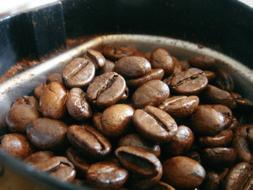
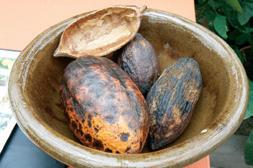
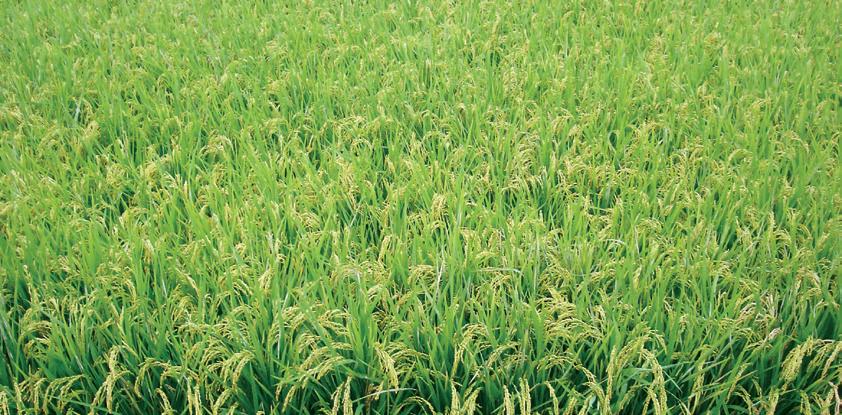 Dr. María Yolanda Teran (KICHWA)
Dr. María Yolanda Teran (KICHWA)
The Convention on Biological Diversity (CBD) was adopted in the Nairobi Conference in 1992. It was opened for signature at the Rio Earth Summit and entered into force in 1993. The first session of the Conference of the Parties was held in Nassau, Bahamas in 1994. The Program of work for Article 8(j), which is related to Traditional Knowledge, was concluded in 2020 after 20 years of development with the participation and advocacy of Indigenous Peoples and local communities.
As an Indigenous woman and member of the Indigenous Women Network on Biodiversity from Latin America and the Caribbean, I have been participating for several years in the CBD meetings. In 2012, I was invited to a side event on Synthetic Biology in Montreal, Canada. A small group of Indigenous Peoples participated in that event, where scary questions were raised, such as: Are you aware that you are eating synthetic rice, salmon, and cacao? Do you know the difference between a natural, organic product and an artificial product? I wanted to understand Synthetic Biology within my Indigenous cosmovision.
In Kichwa epistemology, Mother Earth is alive and sacred. She has secret, sacred, seen, and unseen beings. Our universe is composed by Jawa Pacha (Upper World: Sun, Moon, stars, Vialactea), Kai Pacha (This World: Mother Earth, ecosystems, ecological niches) and Uku Pacha (Below World: spiritual beings). These three worlds are interconnected and each one has different elements and defined roles. Indigenous Peoples also pay great attention to the beings, roles, and colors of the sacred directions: North, South, East, West, Center, Above, and Below. At the side event, we received a lot of information
on biotechnologies. My question was how these new biotechnologies could be understood by Indigenous Peoples and what could be done to include our views in national and international meetings.
Within the CBD, we have discussions on Synthetic Biology and new biotechnologies such as gene drives and Digital Sequence Information. Many of these biotechnologies are already in use, while others are in the process of development in laboratories and will be tested in the field of several countries and places where Indigenous Peoples are currently living. The consequences and impacts of these new technologies on human beings and Mother Earth are unknown.
During 2020–2022, Indigenous Peoples and local communities faced challenges to participate in discussions and negotiations of the Global Biodiversity Framework Post 2020 and new and emergent issues. To have full and effective participation, Indigenous Peoples and local communities must have clear information about these new technologies and their impacts on our livelihoods to be able to make good decisions in these international meetings. We must ensure the inclusion of a human rights framework and the well being of our communities and the care of Mother Earth in accordance to the CBD objectives, Article 8(j) on Traditional Knowledge, innovations and practices of Indigenous Peoples, the Nagoya and Cartagena Protocols, and voluntary guidelines such as the Mo’otz Kuxtal Guidelines on Free, Prior and Informed Consent and the Tkarihwaié:ri Code of Ethical Conduct.
Biotechnology is about the use of biology to solve problems and make useful products. The most prominent area of biotechnology is the production of therapeutic proteins and other drugs through genetic engineering. Genetic resources are used by genetic engineering to

24 | www.cs.org
Synthetic rice, cacao, vanilla, and coffee are already being sold to consumers without clear information about the components. Photos courtesy of Erysimum9, John Loo, Ted Major, and Olle Svenson.
Right: Indigenous Peoples from Paraguay are the original stewards of the stevia plant.
Photo by Manuel M.V.
develop products that will harm humanity, Indigenous Peoples’ livelihoods, and Mother Earth. There are different types of genetic resources from animals, plants, and microbes that are used for research and commercialization in different sectors such as pharmaceuticals, seeds and plantation protection, personal care and cosmetics, and botanical and horticulture. These genetic resources, in which Traditional Knowledge is also linked, are used without the Free, Prior and Informed Consent of Indigenous Peoples.
In the CBD meetings on new and emergent issues, various social actors, including Indigenous Peoples, participated in Ad Hoc Technical Groups in 2015, 2017, and 2019 to consider the potential benefits and adverse impacts of synthetic organisms created for diversity conservation and sustainable use. The Group’s 2015 report defines synthetic biology as “a further development and new dimension of modern biotechnology that combines science, technology, and engineering to facilitate and accelerate the understanding, redesign, manufacture, and/or modification of genetic materials, living organisms, and biological systems.” In these three expert meetings, Western scientists emphasized the importance and useful role of the products coming from synthetic biology. For them, Mother Earth was only a material being for humanity’s benefit. These scientists are in favor of synthetic biology to replace the use of genetic resources and make massive production of several things with less cost and gain millionaire profits.
In 2017 and 2019, I was one of only two Indigenous representatives invited to participate. We explained our views, and with the support of some allies, advocated to include in the CBD technical texts the cultural meaning of Mother Earth, the importance of relationships, and Indigenous Peoples’ demands regarding synthetic biology. In the 2019 report, “It was noted that for [Indigenous Peoples and Local communities], natural elements are living entities. It was recalled that the Free, Prior Informed Consent of potentially affected IPLCs should be sought or obtained. It was pointed out that multiple dimensions need to be considered when assessing the current state of knowledge, including environmental, human health, cultural, socioeconomic, and ethical dimensions as well as the implications in the conservation and the cultural practices of IPLCs. It was noted that the magnitude of impacts of Synthetic Biology, positive or negative, should be assessed on a case-by-case basis, considering a broad range of areas beyond an environmental context.”
Today, the global market is already selling synthetic vanilla, rice, cacao, coffee, sugar, salmon, and perfume without giving the consumers clear information about the components of these products. There are many companies in the United States and Europe in the synthetic biology industry that are violating Indigenous Peoples’ human rights. For instance, stevia is a plant from Indigenous Peoples from Paraguay. One of its components is being used to mass produce stevia for the global market. Indigenous Peoples who are the original owners of this plant
are impoverished and not receiving any benefit from the company that commodified it.
Within Synthetic Biology there are other technologies such as gene drives and Digital Sequence Information that also affect Indigenous livelihoods, Traditional Knowledge, and benefit sharing. We need to be informed about these technologies to understand their role and impact on human beings and Mother Earth and her ecosystems. A gene drive is a type of genetic engineering technique that modifies genes so that they don’t follow the typical rules of heredity. Gene drives dramatically increase the likelihood that a particular suite of genes will be passed onto the next generation, allowing the genes to rapidly spread through a population and override natural selection. Because Synthetic Biology and other biotechnologies present ecological, cultural, and societal threats, including threats to biodiversity and national sovereignty, many social actors at COP13 demanded for the precautionary principle to place a moratorium on any further technical development and experimental application of them and their environmental release.

Digital Sequence Information came into the national and international CBD meetings in 2018 due to its link with biocommerce, access, Traditional Knowledge, and benefit sharing. Seven Indigenous representatives participated in these technical discussions. Through experience, careful observation, and participation with plants, Indigenous Peoples understood and learned about their energy, spirit keepers, uses, relationships to humans and animals, and adaptation to different landscapes, agriculture, and irrigation technologies. Humans and animals depend on the plants for their existence, and plants play important roles in Indigenous Peoples’ livelihoods and spirituality.
Synthetic Biology and other new biotechnologies are advancing with emphasis on the monetary benefits without taking in consideration the socioeconomic factors that are affecting humanity, Indigenous livelihoods, and human rights, and the care, preservation, and rights of Mother Earth for the generations to come. Capacity building for all social actors, and especially Indigenous Peoples, must be in place to have discussions and make decisions in the framework of mutual respect and understanding and in line with the UN Declaration on the Rights of Indigenous Peoples and biocultural community protocols.
—Dr. María Yolanda Teran (Kichwa) is a part-time faculty in Native American Studies and the Honors College at the University of New Mexico. Since 1994 she has been an Indigenous representative for Latin America and the Caribbean before the United Nations.
Cultural Survival Quarterly March 2023 | 25
Synthetic Biology can present threats to biodiversity.
Photo by Ynse.
REESTABLISHING DINÉ FOOD SOVEREIGNTY Through Farming Traditions


pandemic to provide relief to families in need, including vulnerable populations that were directly impacted by the virus. “We understood families and individuals were afraid of leaving their home, and oftentimes when they did, the stores were empty,” the organization says in a grant report to Cultural Survival. They facilitated basic necessities like food, water, and cleaning supplies by creating and supplying food and care boxes. They offered drive-through services and drop offs for families who lacked transportation, had tested positive for COVID-19, or lost their job due to COVID-19.
Shiprock and Hogback, New Mexico are Diné communities spanning over 6,000 acres including a nearby river irrigation system, which makes their land ideal for farming. However, very little of that land is being utilized, as some members have been forced to abandon their traditional Diné lifeways. Food insecurity rates among the Navajo Nation are some of the highest reported in the United States, at 76.7 percent, and younger generations are at risk of not learning Diné traditions, including traditional foods. Enter Diné Introspective Incorporated, a Shiprock-based, nonprofit, Native-led organization with a mission to strengthen communities “through social justice, environmental justice, digital justice, food sovereignty, and energy conservation.”
“In the midst of Diné Bikeyáh, Navajo Nation, our Native people have long experienced poverty, substance and drug addiction, systemic racism, health care disparities, violence, mental health challenges, health inequities, food insecurity, and environmental dangers at alarming rates beyond the national norm. Our biodiverse and rich resources have been exploited by extractive companies and governments that are not unique to Diné land. Today, Diné people and other Tribal communities still face legacies of colonization and modern day exploitation that threatens our communities,” Diné Introspective states on their website.
To address these challenges and inequities, Diné Introspective created the Arrowhead Lifeway Farming Initiative. Arrowhead Lifeway was created at the beginning of the
In addition, to address the increased food insecurity of an already stressed population, Arrowhead Lifeway invested in the local Indigenous farmers, purchasing their organic produce to add to food boxes. These activities underscored the importance of continuing traditional agriculture, food sovereignty, and Indigenous healthy eating that will ultimately lead to a sustainable food system and increased health and wellness among the Navajo Nation. To date, they have served over 7,000 families in the Northern Navajo Agency area in 23 communities.
Diné Introspective believes that reestablishing food sovereignty in their community requires engaging the youth and teaching them traditional farming techniques and language through healing with land. One of the ways this is accomplished is by growing a sustainable food system that incorporates Diné values and beliefs. It is important to continue the teachings, prayers, and ceremonies for their people to heal.
The inspiration for Arrowhead Lifeway was to support local Indigenous farmers by purchasing their produce, assisting the farmers, teaching young farmers about traditional Diné agriculture, providing food demonstrations, and teaching Diné foodways through online workshops and community food sharing gatherings. The goal was to reactivate and reclaim farming land by assisting and engaging local youth farmers and community members to promote a younger and more innovative agricultural sector. Implementing these activities proved difficult due to pandemic restrictions, so Diné Introspective partnered with Cultural Survival’s Keepers of the Earth Fund to provide virtual events and workshops for the youth and for the wider community. When COVID-19 restrictions were lessened, they were able to provide in-person workshops.
26 | www.cs.org KOEF GRANT PARTNER SPOTLIGHT
Verónica Aguilar (MIXTEC, CS STAFF)
All photos by Diné Introspective.
Mariana Kiimi Ortiz Flores.
The funds provided by the Keepers of the Earth Fund were used to support five workshops of food demonstrations, which included cooking meats, vegetables, and breads, among other culturally appropriate recipes to disseminate Indigenous foodways and traditional agricultural techniques. Diné Introspective purchased leafy greens and healthy foods from local Indigenous producers. The Arrowhead Lifeway program was able to create 30 boxes of farming tools, seeds, land development and management plan. Diné Introspective delivered 20 boxes to farmers and 10 boxes to the community. They expect to add more to these boxes at the onset of the next farming season, beginning in April.
In August 2021, Diné Introspective hosted a harvest celebration where they provided over 300 meals to community members, farmers, and surrounding communities. Farmers belonging to Diné Introspective donated their time to cook the food and do community outreach about traditional food. This event celebrated the harvest year along with the new year, and the community engaged in the activities via volunteering and in-kind donations. Community members and Elders mentored the young farmers, building relationships to expand the farmland and incorporate Traditional Knowledge and language. The Elders offered Diné kinship, values, and beliefs, revitalizing the farming land while valuing Diné language and teachings, and healing the youth, community, and land through revitalizing and consuming of traditional foods.
The program activities were led by Elders who are knowledgeable in traditional farming techniques and traditional foodways. In their grant report, Diné Introspective says that their “competitive advantage is their K’é (kinship), the connection to land, water, animal, and all life forms, and understanding and valuing the Diné roots.” Participants of this collaboration between Diné Introspective and Cultural Survival appreciated the holistic approach to healthy and culturally appropriate food. “What I learned from the presentation about food sovereignty is [how] colonization impacted our food system, and now we have to continue preserving our ways of living,” said one Newcomb High School student and farmer. Others discovered that they have always had their traditional food in front of them. “I liked the chilchil pudding; I had never tasted anything like that. I had no idea it was a Diné food,” said a Farmington High School Native American Club student and farmer.
The members of Diné Introspective live in the community they serve, which ensures that its designs and measures are culturally appropriate and responsive. The same members are the beneficiaries of the program services and have the most to gain from cultural and Traditional Knowledge that will inform the improvement of services needed.
`Diné Introspective plans to continue building networks and partnerships with the farmers to reactivate over 100 acres, and eventually expand to an additional 500–1,000 acres each summer, restoring re-generational wealth. Through the Arrowhead Lifeway program and its innovative economic development activities, they will continue to increase Indigenous control over their natural resources and food systems by providing educational workshops to participants.

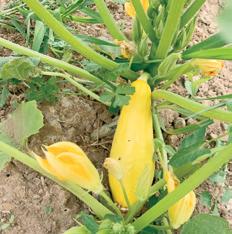
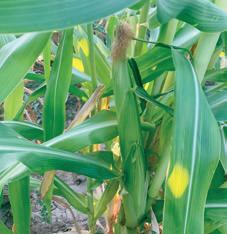
“The program farm is the outdoor classroom for our participants to learn, and workshops will be conducted there. When Indigenous people have high and steady employment rates, the poverty status will decline, and their wealth will begin to grow to create their own projects. This will not only benefit the program participants or local community members, but the [entire] Navajo Nation,” Diné Introspective said in their report to Cultural Survival.
Through the Keepers of the Earth Fund, Cultural Survival supports collective projects to recover or strengthen food sovereignty among Indigenous communities that have been impacted by external and non-culturally appropriate eating habits. Indigenous Peoples around the world, like the Diné, are working to maintain their traditional food and farming as a more respectful relationship with land and environment.
Cultural Survival Quarterly March 2023 | 27 Cultural Survival Quarterly March 2023
In 2021, Diné Introspective received a grant from the Keepers of the Earth Fund, an Indigenous-led fund at Cultural Survival designed to support Indigenous Peoples’ advocacy and community development projects globally. Since 2017, we have supported 238 projects in 38 countries through small grants and technical assistance, totaling $1,070,602.
Tending to the land, growing squash and corn.
Diana Pastor (MAYA K’ICHE’, CS STAFF)
Cultural Survival’s new Advocacy Assistant, Mariana Kiimi Ortiz Flores (Na Ñuu Savi), says her middle name has a special meaning. When her mother was pregnant with her, Marianas’s father met with a group of wise men from their community in San Juan Mixtepec to choose a Mixtec name. They decided to name her Kiimi, which means “star.” “I feel that this fully represents me because I have always felt a special connection with the stars that begin to appear from twilight and shine so brightly that it is impossible not to notice them. It also connects with my parents, because throughout their lives they have overcome a series of difficulties and have given me the most important thing for me: my education and love for my roots,” Mariana says.
Mariana has always been curious about other places, people, and beings that inhabit this world. She left Oaxaca for Mexico City to discover other cultures and ways of life, ultimately returning to her place of origin to rediscover her own identity as an Indigenous Mixtec Na Ñuu Savi woman. After spending her childhood and adolescence in Oaxaca, she wanted to go beyond its borders. This is how she decided to study International Relations at the Universidad Iberoamericana in Puebla. As she learned about other countries and situations of war, violence, and repression that she never could have imagined, her sense of social conscience began to grow, and she decided to use her newly acquired knowledge to do something that would benefit vulnerable and marginalized groups.
One of the issues that hit closest to home was migration; hundreds of people have left Mariana’s small community for the
Knowing the World and Fighting for It MARIANA KIIMI ORTIZ FLORES


United States in pursuit of a better life. When she finished her undergraduate degree, she decided to pursue a master’s degree at the university’s Mexico City campus. She was particularly interested in researching the situation of deportees who have been forced to return to Mexico. Today Mariana considers herself an advocate for the rights of individuals and Indigenous Peoples. She is aware of what is happening in other countries and of the tools and mechanisms used to bring about positive change. Mariana considers going back to her origins and trying to recover the language of her ancestors to be a revolutionary act. She would like the Indigenous Peoples in Mexico to be recognized for their own cultural identities and not to be folklorized or left out at the international level, and she recognizes that much work needs to be done to raise awareness that being Indigenous is not synonymous with inferiority. Mariana believes that governments around the world must stop treating Indigenous Peoples as different and recognize that they have the potential to improve the world from other perspectives, which, she says, “will be possible as we continue to raise our voices and make visible the injustices against Indigenous Peoples at the international level.”
In her personal life, Mariana enjoys reading both fiction and nonfiction that transport her to other worlds and inspire her to continue growing personally and professionally, as well as writing reflections on her life and other social issues. Music is also an essential part of her daily life. On joining the Cultural Survival staff, she says, “I would like to specialize even more in the defense of human rights. I want to continue studying and putting into practice what I have already learned. I would like to contribute to the growth of my community in a more direct way, to promote and ensure that young people do not need to emigrate to other countries out of necessity and that they have equal opportunities and possibilities, as well as love for their people and cultures.”
28 | www.cs.org STAFF SPOTLIGHT
All photos courtesy of Mariana Kiimi Ortiz Flores.
Nature-Made Art by TAHIANA CREATION
Diana Pastor (MAYA K’ICHE’, CS STAFF)
Acolor, a texture, or a smell can be a powerful tool if we want something to become special, and Tahiana Creation knows that very well. The scent of Tahiana Creation’s woven handbags, baskets, and embroidery reaches the nose before the sight reaches the eyes. Their Malagasy crafters’ raw material, the vétiver plant, is a tradi tional material used for crafts; it also has therapeutic properties such as being anti-inflammatory and an insect repellant. Tahiana Creation uses this valuable natural fiber to create quality, fragrant traditional crafts while benefiting Malagasy artists and ensuring the survival of the vétiver plant.
Marie Alexandrine Rasoanantenaina (Malagasy, Merina) is from Madagascar and is the founder of Tahiana Creation. The story of her business endeavors begins in 1983, when she created her own products from scratch when she was just a girl. She started by sewing children’s Bermuda shorts with the scraps of fabric left over from her grandmother, who was a seamstress and sold the products by going door to door. It was hard work. Some years later, Rasoanantenaina recruited an employee to do embroidery and started prospecting for new customers in town.
Rasoanantenaina started to create naturally dyed products using leaves, bark, fruit stones, and the roots of plants, eventually achieving 40 kinds of natural colors through this method. As the business grew, she strengthened her skills in design, production,

management, and marketing, which allowed her to buy materials such as raffia and vetiver for her craftwork.



Today, Tahiana Creation works closely with 45 Malagasy artists in Madagascar. Their vision is to “reduce poverty of vulnerable people by promoting the quality of handmade Malagasy crafts and protecting its fauna and flora, wealth, and biodiversity abroad.” Since 1983, Tahiana Creation has created jobs for Malagasy craftswomen to ensure their income, food, education, and health for their family and communities.
Vetiver is a versatile plant traditionally used to build roofs for Malagasy houses. It has a winding root that can be up to six meters deep and has a unique aroma prized and valued in the perfume industry. Verifier’s scent has been described as fresh cut grass with warm and dry undertones. It is earthy and woody. The process for working with this plant is that after being dug up, the root is washed and then dried naturally. To keep its scent, craftsmen do not tint the roots, but usually weave them with cotton to make handicrafts.

Tahiana Creation’s current works combine traditional weaving techniques with modern aesthetics to create baskets, rugs,
and other household items for daily use. Rasoanantenaina supports other seamstresses by providing platforms by which they can sell their work, and by providing learning opportunities in the form of training and workshops to foster their marketing and business skills.
Rasoanantenaina has gained international recognition. She has participated in the Cultural Survival Bazaar since 2017, as well as the African Women’s Entrepreneurship Program, the renowned International Folk Art Market in Santa Fe, and the Vermont International Festival. Taihana Creation also promotes fair trade practices as members of the World Fair Trade Organization. We invite you to explore her art and get a unique piece for you or your loved ones to support natural art, Indigenous land stewardship, and fairly traded artwork in Madagascar.
The in-person Cultural Survival Bazaars are suspended due to the pandemic. We look forward to announcing dates for the 2023 Bazaar season soon. Until then, please support and purchase directly from our Bazaar artists by visiting our artist directory at bazaar.cs.org, or visit Tahiana Creation directly: tahianacreation.mg For inquiries, please email rmalexandrine@ gmail.com or send a message via Whatsapp: +1 206 747 7060
BAZAAR
SPOTLIGHT
ARTIST
Marie Alexandrine Rasoanantenaina with vetiver baskets.
Placemat made with vetiver root.
Harvesting vetiver.
Photo courtesy of Tahiana Creation.
Crafts made with vetiver root.
FOR GENERATIONS to Come
Our work, made possible by your gifts, reaches Indigenous communities in the most distant corners of the globe. Indigenous Peoples’ knowledge and practices teach the next generations how to live together to be part of a healthy planet. For over 50 years, Cultural Survival has been working towards the fulfillment and upholding of Indigenous Peoples’ rights and selfdetermination worldwide, for the rights of Indigenous Peoples to live on the lands they know intimately and without intrusion from corporate and State actors intent on the exploitation of natural resources. Support Indigenous Peoples’ self-determination and Indigenous-led solutions to today’s greatest challenges. Your gift today supports a brighter tomorrow for generations to come.
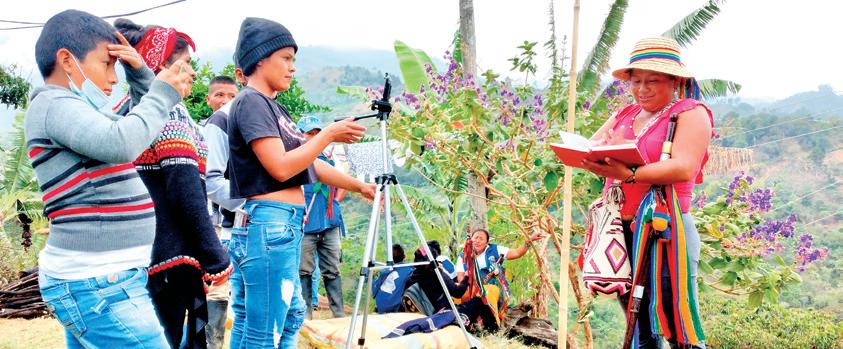
Invest in Future Generations
Leave a Lasting Legacy with a Planned Gift
Include Cultural Survival in your estate plans and leave an important legacy for future generations. A gift from your estate, through a variety of estate planning vehicles such as wills, trusts, life insurance, and retirement assets, supports our mission while offering tax advantages to you and your family.
Visit www.cs.org/plannedgiving for more information.
Thank you! #culturalsurvival50 #1972 #CS50 Donate online at cs.org/donate | Call us at 617.441.5400 x18
Photo by Jimena Musicue (Nasa), CS Youth Fellow from Colombia.






 Galina Angarova (Buryat) Executive Director
Galina Angarova (Buryat) Executive Director
























 Youth delegates from Rapa Nui.
Shirley and Val Hunikuin (Hunikuin), delegates from Coordination of the Indigenous Organizations of the Brazilian Amazon (COIAB).
Panelists and attendees at Weaving Perspectives Across Regions: The Need for Equitable Funding for Indigenous Women’s Leadership, Movement Building & Climate Solutions panel.
Panelists for Empowering Communities for a Just Transition panel.
Youth delegates from Rapa Nui.
Shirley and Val Hunikuin (Hunikuin), delegates from Coordination of the Indigenous Organizations of the Brazilian Amazon (COIAB).
Panelists and attendees at Weaving Perspectives Across Regions: The Need for Equitable Funding for Indigenous Women’s Leadership, Movement Building & Climate Solutions panel.
Panelists for Empowering Communities for a Just Transition panel.






 Mrinalini Rai (Rai) Director, Women4Biodiversity
Mrinalini Rai (Rai) Director, Women4Biodiversity




 Galina Angarova (BURYAT, CS STAFF) and Bryan Bixcul (MAYA TZ’UTUJIL, CS STAFF)
Galina Angarova (BURYAT, CS STAFF) and Bryan Bixcul (MAYA TZ’UTUJIL, CS STAFF)








 Carbon Policy Educator, Indigenous Environmental Network
Carbon Policy Educator, Indigenous Environmental Network
 President, Saami Council
President, Saami Council



 Dr. María Yolanda Teran (KICHWA)
Dr. María Yolanda Teran (KICHWA)















